

What to expect on your visit to Auschwitz
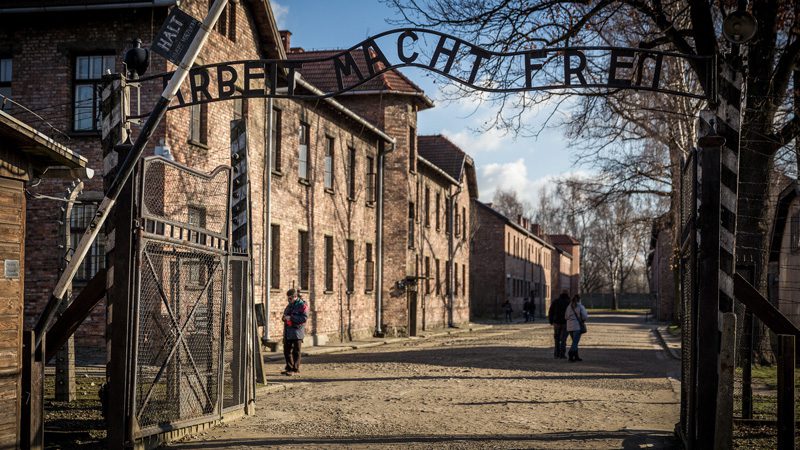
A couple of years ago, my girlfriend and I were hostelling our way through central Europe. We’d made it to Berlin, which is a little like those crossroads in movies, the ones with a dozen signs pointing in every possible direction.
There were too many choices as to what to do next. We could head north into Denmark, west to the Netherlands and Belgium, or south into the Czech Republic.
“What about Poland?” my girlfriend said. “We could see Auschwitz.”
The drive from Krakow
A couple of days later I was bouncing along in a small bus through the green lanes of southern Poland, just outside Krakow. The driver didn’t speak any English, nor did the other four sullen Poles on board. When we mentioned the word Auschwitz the driver just grunted and gestured to the seats.
The drive from Krakow to the old camp doesn’t take long. After thirty minutes we stopped on a road like any other road. A few of us got off and the bus rumbled away. Opposite was a shady boulevard lined with birch and oak trees. Glance up and you could just make out the red bricks and roofs of Auschwitz I, the original camp built by Polish political prisoners in the early 1940s.
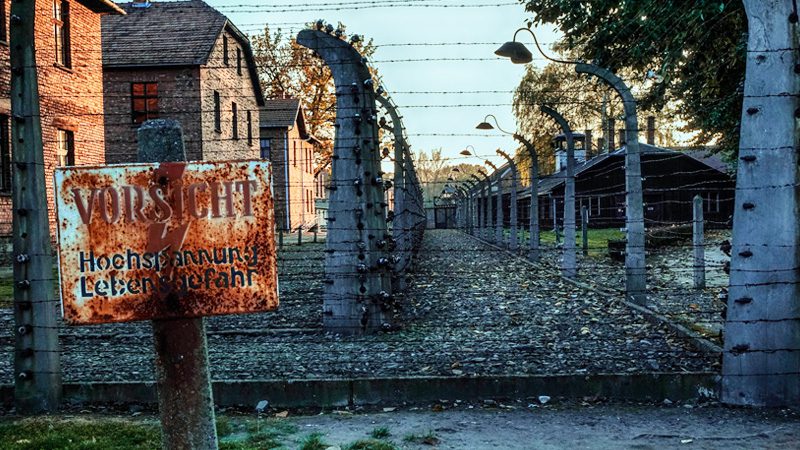
Auschwitz I. Image Thomas Hee, Flickr
Auschwitz I
On busy days, over 30,000 tourists will walk through the grounds of Auschwitz. Dozens and dozens of tours run simultaneously through the old camp and Birkenau, a few minutes down the road. As such, they run a pretty efficient ship. When you arrive you sign up for a tour time and are equipped with a pass, headset and radio. Your guide has a microphone and a transmitter, so all you need to do is tune in to their frequency. You begin where so many prisoners once did, beneath the rusted metal words “Arbeit macht frei” (work makes you free).
The next few hours are hard to describe. Your guide leads you through the avenues and neat brick houses of Auschwitz I. There are bare dormitories, old corridors, chilly parade grounds and – everywhere – double lines of razor wire poles, each equally spaced from its neighbour, and arched in a candy cane curve.
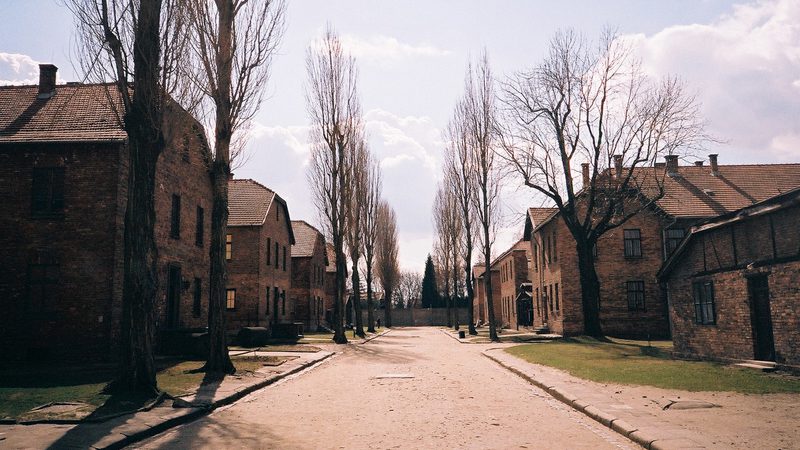
Image c/o Monica Kelly, Flickr
In every room, rows and rows of faces stare out from the walls: old prisoner profiles in black and white. Most look blank and empty; they portray nothing. But studying them is worth the price of admission alone. You could look at the eyes for hours, searching for a glimmer of hope, a pang of fear or a hint of determination. You can’t help but wonder what they were thinking.
Your guide says, “Three weeks after these were taken, all these people were dead.”
Every piece of the place has a story attached. Here a room, three feet by three feet, where four men were made to stand in the dark until they died. There the square outside notorious Block 11, the prison within a prison, where inmates were routinely executed against a brick wall. The house of the camp commandant, Rudolf Hoss, and the gallows where he was executed by the Allies in 1947. The gas chambers, the piles of hair, glasses, shoes… children’s toys.
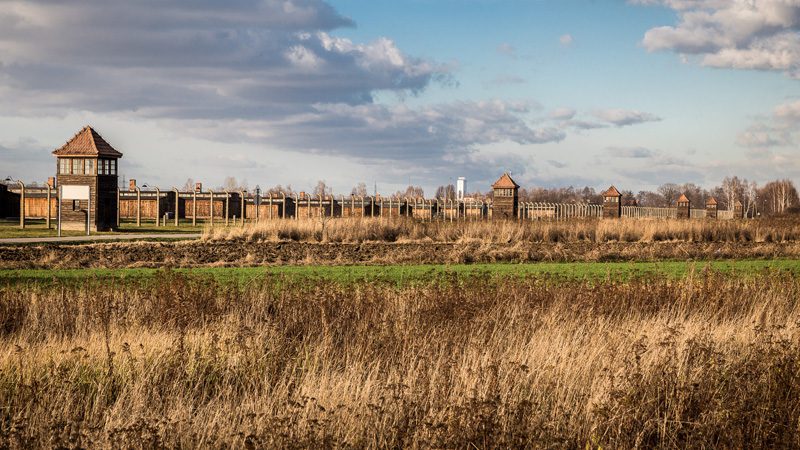
The fields of Birkenau. Image Mattia Panciroli, Flickr
Tourism in Auschwitz has attracted some criticism in recent years (the alleged ‘death tourism’) but I don’t really buy into it. You can criticise the actions of individuals, sure, but I think educating and illuminating future generations on one of the darkest times in human history can only be a good thing. Just like Winston Churchill said: “Those who do not learn from history are doomed to repeat it.”
After the original camp, the tour moves to Birkenau, which is an experience in itself. The close streets and heaviness of Auschwitz I are replaced by acres of grass, clear skies and two parallel railway tracks that come to an ominous, and very final, stop. There’s a warped tranquillity in Birkenau. Yellow wildflowers grow beneath the guard towers. You can see nearby villages and rolling hills. There’s the warble of distant birdsong. It’s hard to imagine that up to 20,000 people per day were killed and burned here. Apparently the nearby residents, the ones who hadn’t been rounded up in the first few years of Nazi occupation, could see and smell the smoke for miles. They slept with the distant glow of the ovens outside their window.
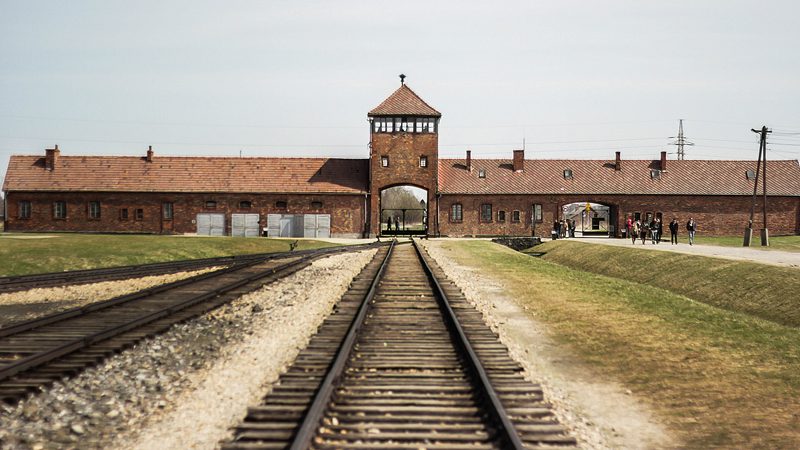
Image c/o Nick Perrone, Flickr
A visit to Auchwitz is the difference between reading the music and hearing it played. You can read about the horrors that happened there, watch documentaries that give you all the facts, but until you stand in the gas chambers, hear the eerie silence around the ash pools of Birkenau and see the dusty wooden bunks where prisoners would huddle together – you won’t understand it.
At the end of the tour you’re left standing outside the red brick main entrance to Birkenau. I remember thinking how quiet the place was. Even with so many people in it. there was so much silence in that place.
Travellers can visit Auschwitz on some of our trips through Poland . All entry fees to the World Heritage Site go towards preserving the camp for future generations.
Feature image c/o Matti Panciroli, Flickr

Feeling inspired?
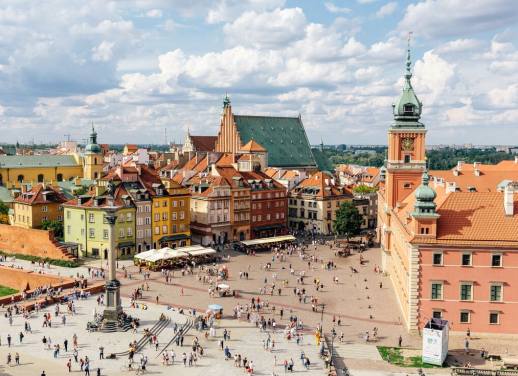
James Shackell
I was born in 1987 and aged from there. I like the sound of pop-rocks and dislike the sound of styrofoam. The length of my forearm is approximately the same as the length of my shin. My favourite Beatle is Ringo. I believe that junk food tastes so good because it’s bad for you and that your parents did the best job they knew how to do. If Johnny Cash wrote a song about my travels it would be called ‘I’ve been to several places but still have many other destinations on my to-do list, man’. Sometimes I have trouble finishing sen
You might also like
The 7 best places to go on a..., galapagos or madagascar which unique destination should be..., travelling to chile here’s the best time to..., 10 reasons to visit samoa, the 10 antarctica questions you want answered, australia or new zealand where to go on..., 10 epic spots to stop at on your..., small group travel vs coach tours: which style..., costa rica or mexico: which country to check..., 7 of the best destinations for solo travellers..., machu picchu or chichen itza which historical site....
Search the Holocaust Encyclopedia
- Animated Map
- Discussion Question
- Media Essay
- Oral History
- Timeline Event
- Clear Selections
- Bahasa Indonesia
- Português do Brasil
Featured Content
Find topics of interest and explore encyclopedia content related to those topics
Find articles, photos, maps, films, and more listed alphabetically
For Teachers
Recommended resources and topics if you have limited time to teach about the Holocaust
Explore the ID Cards to learn more about personal experiences during the Holocaust
Timeline of Events
Explore a timeline of events that occurred before, during, and after the Holocaust.
- Introduction to the Holocaust
- Liberation of Nazi Camps
- Warsaw Ghetto Uprising
- Boycott of Jewish Businesses
- Axis Invasion of Yugoslavia
- Antisemitism
- How Many People did the Nazis Murder?
- The Rwanda Genocide
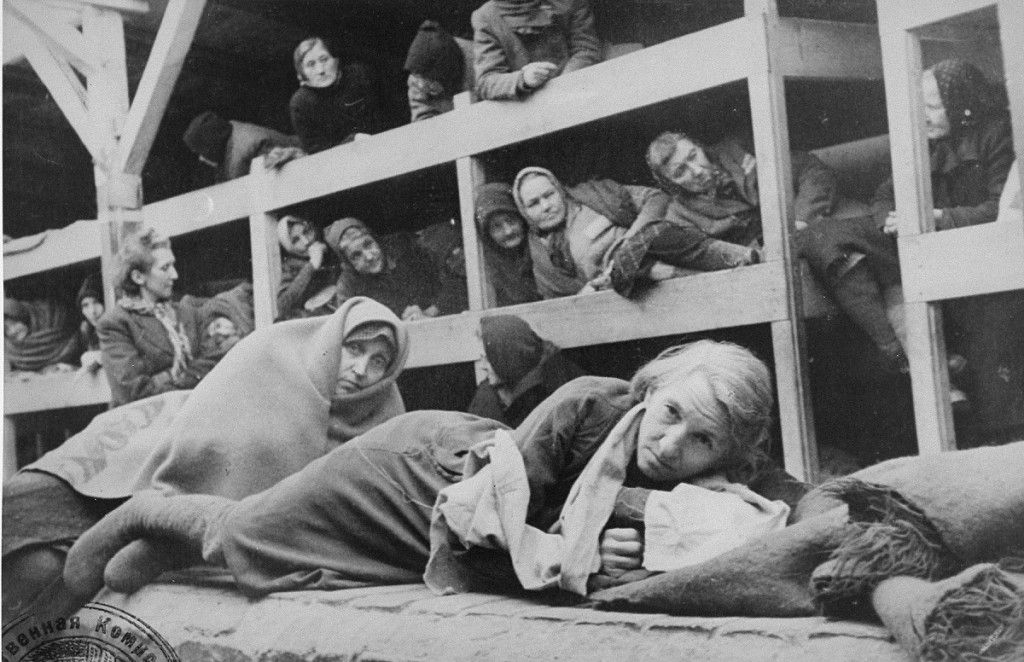
The largest of its kind, the Auschwitz camp complex was essential to carrying out the Nazi plan for the "Final Solution." Auschwitz left its mark as one of the most infamous camps of the Holocaust.
Located in German-occupied Poland, Auschwitz consisted of three camps including a killing center. The camps were opened over the course of nearly two years, 1940-1942. Auschwitz closed in January 1945 with its liberation by the Soviet army.
More than 1.1 million people died at Auschwitz, including nearly one million Jews. Those Jews who were not sent directly to gas chambers were selected for forced labor.
The Auschwitz complex differed from the other Nazi killing centers because it included a concentration camp and a labor camp as well as large gas chambers and crematoria at Birkenau constructed for the mass murder of European Jews.
- killing centers
- concentration camps
- medical experiments
- forced labor
This content is available in the following languages
Where was auschwitz located.
Auschwitz is the German name for the Polish city Oświęcim. Oświęcim is located in Poland, approximately 40 miles (about 64 km) west of Kraków. Germany annexed this area of Poland in 1939.
The Auschwitz concentration camp was located on the outskirts of Oświęcim in German-occupied Poland. It was originally established in 1940 and later referred to as "Auschwitz I" or "Main Camp."
The Auschwitz-Birkenau killing center, also referred to as "Auschwitz II," was located near the Polish village Brzezinka (German: Birkenau). This is about 2 miles (just over 3 km) from the Main Camp. The Germans started construction on Auschwitz-Birkenau in 1941.
Auschwitz III or Monowitz was located near the Polish village of Monowice (German: Monowitz). This is about 4 miles (approximately 6.5 kilometers) from the Main Camp. The Germans initially established the Buna subcamp there in 1942. In 1943, it became a concentration camp.
The Auschwitz camp complex also included numerous subcamps. The majority of these subcamps were located in the region around Auschwitz.
Number of Victims
It is estimated that the SS and police deported at least 1.3 million people to the Auschwitz camp complex between 1940 and 1945. Of these deportees, approximately 1.1 million people were murdered.
The best estimates of the number of victims at the Auschwitz camp complex, including the killing center at Auschwitz-Birkenau, between 1940 and 1945 are:
- Jews (1,095,000 deported to Auschwitz, 960,000 died)
- Non-Jewish Poles (140,000- 150,000 deported, 74,000 died)
- Roma (Gypsies) (23,000 deported, 21,000 died)
- Soviet prisoners of war (15,000 deported and died)
- Other nationalities (25,000 deported, 10,000- 15,000 died)
During the Holocaust , concentration camp prisoners received tattoos only at one location, Auschwitz. Incoming prisoners were assigned a camp serial number which was sewn to their prison uniforms. Only those prisoners selected for work were issued serial numbers; those prisoners sent directly to the gas chambers were not registered and received no tattoos.
Auschwitz I
SS authorities continuously used prisoners for forced labor to expand the camp. During the first year of the camp’s existence, the SS and police cleared a zone of approximately 40 square kilometers (15.44 square miles) as a “development zone” reserved for the exclusive use of the camp.
On May 20, 1940, the first prisoners arrived at Auschwitz. The transport consisted of some 30 German inmates, categorized as "professional criminals." The SS had selected them from the Sachsenhausen concentration camp outside of Berlin. Less than a month later, on June 14, German authorities in occupied Poland deported 728 Polish prisoners from a prison in Tarnow to Auschwitz. This was the first of many transports of Poles to the Auschwitz camp.
Like most German concentration camps, Auschwitz I was constructed for three purposes:
- To incarcerate real and perceived enemies of the Nazi regime and the German occupation authorities in Poland for an indefinite period of time
- To provide a supply of forced laborers for deployment in SS-owned construction-related enterprises (and, later, armaments and other war-related production)
- To serve as a site to kill small, targeted groups of the population whose death was determined by the SS and police authorities to be essential to the security of Nazi Germany.
At Auschwitz I, SS physicians carried out medical experiments in the hospital, Barrack (Block) 10. They conducted pseudoscientific research on infants, twins, and dwarfs, and performed forced sterilizations and castrations of adults. The best-known of these physicians was SS Captain Dr. Josef Mengele .
When we think of the crimes of Nazi doctors, what comes to mind are their cruel and sometimes fatal experiments… Yet when we turn to the Nazi doctors’ role in Auschwitz, it was not the experiments that were most significant. Rather, it was his participation in the killing process—indeed his supervision of Auschwitz mass murder from beginning to end. 1
Auschwitz II (Auschwitz-Birkenau)
Of the three camps established near Oswiecim, the Auschwitz-Birkenau camp had the largest total prisoner population. It was divided into ten sections separated by electrified barbed-wire fences. Like Auschwitz I, it was patrolled by SS guards, including—after 1942—SS dog handlers.
The camp included sections for women; men; a family camp for Roma (Gypsies) deported from Germany, Austria, and the Protectorate of Bohemia and Moravia; and a family camp for Jewish families deported from the Theresienstadt ghetto.
Auschwitz-Birkenau was also a killing center and played a central role in the German effort to kill the Jews of Europe. Around the beginning of September, 1941, the SS at Auschwitz I conducted the first tests of Zyklon B as a mass murder agent, using Soviet POWs and debilitated Polish prisoners as victims. The “success” of these experiments led to the construction of a chamber in the crematorium of Auschwitz I that, like the subsequent gas chambers at Auschwitz, used Zyklon B to murder victims. The first transports of Jewish men, women, and children sent to Auschwitz as part of the “final solution” were murdered in this gas chamber (Crematorium I) in February and March 1942.
During the first half of 1942, the Auschwitz SS moved the gassing operations to Auschwitz-Birkenau by converting two farmhouses just outside the camp’s fence into gas chambers. Bunker I began operating in spring 1942, the larger Bunker II in mid-summer 1942.
These gassing facilities soon proved inadequate for the task of murdering the large numbers of Jewish deportees being sent to Auschwitz. Between March and June 1943, four large crematoria were built within Auschwitz-Birkenau, each with a gas chamber, a disrobing area, and crematory ovens. Gassings ceased at Bunkers I and II when Crematoria II through V began operating, although Bunker II was put back into operation during the deportation of Hungary’s Jews in 1944. Gassing of newly arrived transports ceased at Auschwitz by early November 1944.
Jewish deportees arriving at Auschwitz-Birkenau immediately underwent selection. The SS staff chose some of the able-bodied for forced labor and sent the rest directly to the gas chambers, which were disguised as shower installations to mislead the victims. The belongings of all deportees were confiscated and sorted in the "Kanada" (Canada) warehouse for shipment back to Germany. Canada symbolized wealth to the prisoners.
Deportations to Auschwitz
Trains arrived at Auschwitz frequently with transports of Jews from virtually every country in Europe occupied by or allied to Germany. These transports arrived from early 1942 to early November 1944. The approximate breakdown of deportations from individual countries:
- Hungary: 426,000
- Poland: 300,000
- France: 69,000
- Netherlands: 60,000
- Greece: 55,000
- Bohemia and Moravia: 46,000
- Slovakia: 27,000
- Belgium: 25,000
- Yugoslavia: 10,000
- Italy: 7,500
- Norway: 690
- Other (including concentration camps): 34,000
The Prisoner Revolt at Auschwitz
The Germans crushed the revolt and killed almost all of the prisoners involved in the rebellion. The Jewish women who had smuggled the explosives into the camp were publicly hanged in early January 1945.
The Auschwitz SS stopped gassing newly arrived prisoners by early November 1944. On orders from Himmler, camp officials began dismantling the crematoria. The SS destroyed the remaining gassing installations as Soviet forces approached in January 1945.
Auschwitz III
Auschwitz III, also called Buna or Monowitz, was established in October 1942. It housed prisoners assigned to work at the Buna synthetic rubber works, located on the outskirts of the small village of Monowice.
Auschwitz III also had a so-called Labor Education Camp for non-Jewish prisoners who were perceived to have violated German-imposed labor discipline.
Auschwitz Subcamps
In general, subcamps that produced or processed agricultural goods were administratively subordinate to Auschwitz-Birkenau. Subcamps whose prisoners were deployed at industrial and armaments production or in extractive industries (e.g., coal mining, quarry work) were administratively subordinate to Auschwitz-Monowitz. This division of administrative responsibility was formalized after November 1943.
Auschwitz inmates were employed on huge farms, including the experimental agricultural station at Rajsko. They were also forced to work in coal mines, in stone quarries, in fisheries, and especially in armaments industries such as the SS-owned German Equipment Works (established in 1941). Periodically, prisoners underwent selection. If the SS judged them too weak or sick to continue working, they were transported to Auschwitz-Birkenau and killed.
Prisoners selected for forced labor were registered and tattooed with identification numbers on their left arms in Auschwitz I. They were then assigned to forced labor at the main camp or elsewhere in the complex, including the subcamps.
Evacuation of Auschwitz and its Subcamps
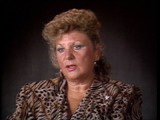
In mid-January 1945, as Soviet forces approached the Auschwitz concentration camp complex, the SS began evacuating Auschwitz and its subcamps.
SS units forced nearly 60,000 prisoners to march west from the Auschwitz camp system. Thousands had been killed in the camps in the days before these death marches began.
Tens of thousands of prisoners, mostly Jews, were forced to march either northwest for 55 kilometers (approximately 30 miles) to Gliwice (Gleiwitz) or due west for 63 kilometers (approximately 35 miles) to Wodzislaw (Loslau) in the western part of Upper Silesia. Those forced to march northwest were joined by prisoners from subcamps in East Upper Silesia, such as Bismarckhuette, Althammer, and Hindenburg. Those forced to march due west were joined by inmates from the subcamps to the south of Auschwitz, such as Jawischowitz, Tschechowitz, and Golleschau.
SS guards shot anyone who fell behind or could not continue. Prisoners also suffered from the cold weather, starvation, and exposure on these marches. At least 3,000 prisoners died on route to Gliwice alone. Possibly as many as 15,000 prisoners died during the evacuation marches from Auschwitz and the subcamps.
Upon arrival in Gliwice and Wodzislaw, the prisoners were put on unheated freight trains and transported to concentration camps in Germany, particularly to Flossenbürg , Sachsenhausen , Gross-Rosen , Buchenwald , Dachau , and also to Mauthausen in Austria. The rail journey lasted for days. Without food, water, shelter, or blankets, many prisoners did not survive the transport.
In late January 1945, SS and police officials forced 4,000 prisoners to evacuate Blechhammer on foot. Blechhammer was a subcamp of Auschwitz-Monowitz. The SS murdered about 800 prisoners during the march to the Gross-Rosen concentration camp. SS officials also killed as many as 200 prisoners left behind in Blechhammer as a result of illness or unsuccessful attempts to hide. After a brief delay, the SS transported around 3,000 Blechhammer prisoners from Gross-Rosen to the Buchenwald concentration camp in Germany.
The Liberation of Auschwitz
On January 27, 1945, the Soviet army entered Auschwitz, Birkenau, and Monowitz and liberated about seven thousand prisoners, most of whom were ill and dying.
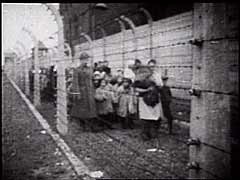
Series: Auschwitz
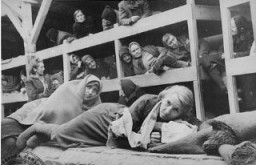
Auschwitz: Key Dates
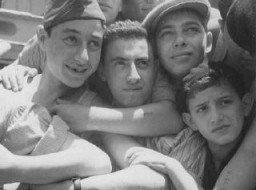
Tattoos and Numbers: The System of Identifying Prisoners at Auschwitz
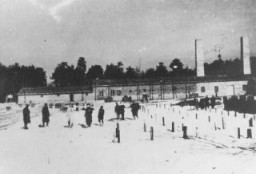
Administration of the Auschwitz Camp Complex
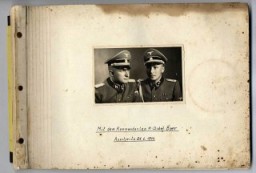
Collections Highlight: Auschwitz Through the Lens of the SS
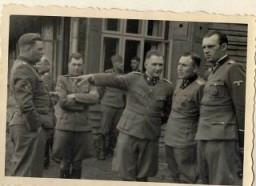
Auschwitz Through the Lens of the SS: The Album

Auschwitz Through the Lens of the SS: A Tale of Two Albums
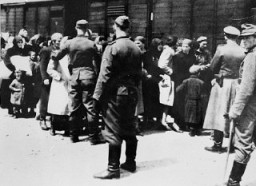
Auschwitz Through the Lens of the SS: Frankfurt Trial
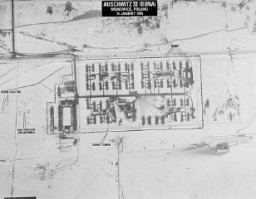
The United States and the Holocaust: Why Auschwitz was not Bombed
Series: auschwitz subcamps, blechhammer, fürstengrube, series: killing centers.

Killing Centers: An Overview
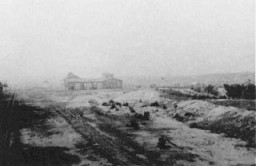
Operation Reinhard (Einsatz Reinhard)

Deportations to Killing Centers
Killing centers: in depth, switch series, critical thinking questions.
- Why has the Auschwitz complex become a symbol of the Holocaust?
- Besides the SS, what organizations or professions were involved in the design, construction, and operation of the camp?
- Were the German and Polish populations aware of Auschwitz, its purposes, and the conditions within? How would you begin to research this question?
Further Reading
Berenbaum, Michael, and Yisrael Gutman, editors. Anatomy of the Auschwitz Death Camp . Bloomington: Indiana University Press, 1998.
Cywinski, Piotr, Piotr Setkiewicz, and Jacek Lachendro. Auschwitz from A to Z. An Illustrated History of the Camp . Oswiecim: Auschwitz-Birkenau State Museum, 2013.
Dlugoborski, Waclaw et al. Auschwitz, 1940–1945: Central Issues in the History of the Camp . Oswiecim: Auschwitz-Birkenau State Museum, 2000.
Langbein, Hermann. People in Auschwitz . Chapel Hill: University of North Carolina Press, 2004.
Levi, Primo. Survival in Auschwitz: The Nazi Assault on Humanity . New York: Collier Books, 1986.
Rees, Laurence. Auschwitz: A New History . New York: Public Affairs, 2005.
Swiebocka, Teresa, editor. Auschwitz: A History in Photographs . Bloomington: Indiana University Press; Warsaw: Ksiazka i Wiedza, 1993.
Thank you for supporting our work
We would like to thank Crown Family Philanthropies and the Abe and Ida Cooper Foundation for supporting the ongoing work to create content and resources for the Holocaust Encyclopedia. View the list of all donors .

Online guided tours for individual visitors
Individual visitors can visit the Auschwitz Memorial with a guide online thanks to the "Auschwitz in Front of Your Eyes" platform.
Groups are organized in three language versions, and the visits starts at a predetermined time.
Entry cards are available at visit.auschwitz.org at "online individual visit" section.
The online tour lasts about two hours and is divided into two parts – in Auschwitz I and Birkenau. The guide's narration is conducted live. Additionally, the educator will also use multimedia materials, archival photographs, artistic works, documents, and testimonies of Survivors. Thanks to the application, interaction with the guide and asking questions is also possible.
Online tours hours (time in Poland):
• English: 12:30 daily • German: 12:15 pm Saturday/Sunday • Polish: 12:00 pm Saturday/Sunday
• Polish: 13:00 Saturday/Sunday • German: 13:15 Saturday/Sunday • English: 13:30 daily
• English: 14:30 daily • German: 14:15 Saturday/Sunday • Polish: 14:00 Saturday/Sunday
APRIL - SEPTEMBER
• English: 8:30; 14:30; 17:00 daily • German: 14:15 Saturday/Sunday • Polish: 14:00 Saturday/Sunday
• English: 13:30 daily • German: 13:15 Saturday/Sunday • Polish: 13:00 Saturday/Sunday
NOVEMBER - DECEMBER
• English: 12:30 daily • German: 12:15 Saturday/Sunday • Polish: 12:00 Saturday/Sunday
More information about the "Auschwitz in Front of Your Eyes" platform .
- via @auschwitzmuseum" aria-label="Udostępnij na Twitter">
Images from www.auschwitz.org may be used only in publications relating to the history of the German Nazi concentration and extermination camp Auschwitz-Birkenau or the activities of the Auschwitz Memorial. Their use must not tarnish the good reputation of the victims of KL Auschwitz. Any interference in the integrity of the images – including cropping or graphic processing – is prohibited. The use of the images for commercial purposes requires the Museum’s approval and information about the publication. Publishers undertake to indicate the authors and origin of the images: www.auschwitz.org, as well as to inform the Museum of the use of the images ([email protected]).
- History Classics
- Your Profile
- Find History on Facebook (Opens in a new window)
- Find History on Twitter (Opens in a new window)
- Find History on YouTube (Opens in a new window)
- Find History on Instagram (Opens in a new window)
- Find History on TikTok (Opens in a new window)
- This Day In History
- History Podcasts
- History Vault
By: History.com Editors
Updated: January 24, 2024 | Original: December 15, 2009

Auschwitz, also known as Auschwitz-Birkenau, opened in 1940 and was the largest of the Nazi concentration and death camps. Located in southern Poland, Auschwitz initially served as a detention center for political prisoners. However, it evolved into a network of camps where Jewish people and other perceived enemies of the Nazi state were exterminated, often in gas chambers, or used as slave labor. Some prisoners were also subjected to barbaric medical experiments led by Josef Mengele (1911-79). During World War II (1939-45), more than 1 million people, by some accounts, lost their lives at Auschwitz.
In January 1945, with the Soviet army approaching, Nazi officials ordered the camp abandoned and sent an estimated 60,000 prisoners on a forced march to other locations. When the Soviets entered Auschwitz, they found thousands of emaciated detainees and piles of corpses left behind.
Auschwitz: Genesis of Death Camps
After the start of World War II , Adolf Hitler (1889-1945), the chancellor of Germany from 1933 to 1945, implemented a policy that came to be known as the “Final Solution.” Hitler was determined not just to isolate Jews in Germany and countries annexed by the Nazis, subjecting them to dehumanizing regulations and random acts of violence. Instead, he became convinced that his “Jewish problem” would be solved only with the elimination of every Jew in his domain, along with artists, educators, Romas, communists, homosexuals, the mentally and physically handicapped and others deemed unfit for survival in Nazi Germany.
Did you know? In October 1944, a group of Auschwitz "Sonderkommando," young Jewish males responsible for removing corpses from crematoriums and gas chambers, staged a revolt. They assaulted their guards, using tools and makeshift explosives, and demolished a crematorium. All were apprehended and killed.
To complete this mission, Hitler ordered the construction of death camps. Unlike concentration camps, which had existed in Germany since 1933 and were detention centers for Jews, political prisoners and other perceived enemies of the Nazi state, death camps existed for the sole purpose of killing Jews and other “undesirables,” in what became known as the Holocaust.
Auschwitz: The Largest of the Death Camps
Auschwitz, the largest and arguably the most notorious of all the Nazi death camps, opened in the spring of 1940. Its first commandant was Rudolf Höss (1900-47), who previously had helped run the Sachsenhausen concentration camp in Oranienburg, Germany. Auschwitz was located on a former military base outside Oswiecim, a town in southern Poland situated near Krakow, one of the country’s largest cities. During the camp’s construction, nearby factories were appropriated and all those living in the area were forcibly ejected from their homes, which were bulldozed by the Nazis.
Auschwitz originally was conceived as a concentration camp, to be used as a detention center for the many Polish citizens arrested after Germany annexed the country in 1939. These detainees included anti-Nazi activists, politicians, resistance members and luminaries from the cultural and scientific communities. Once Hitler’s Final Solution became official Nazi policy, however, Auschwitz was deemed an ideal death camp locale. For one thing, it was situated near the center of all German-occupied countries on the European continent. For another, it was in close proximity to the string of rail lines used to transport detainees to the network of Nazi camps.
However, not all those arriving at Auschwitz were immediately exterminated. Those deemed fit to work were employed as slave labor in the production of munitions, synthetic rubber and other products considered essential to Germany’s efforts in World War II.
Auschwitz and Its Subdivisions
At its peak of operation, Auschwitz consisted of several divisions. The original camp, known as Auschwitz I, housed between 15,000 and 20,000 political prisoners. Those entering its main gate were greeted with an infamous and ironic inscription: “Arbeit Macht Frei,” or “Work Makes You Free.”
Auschwitz II, located in the village of Birkenau, or Brzezinka, was constructed in 1941 on the order of Heinrich Himmler (1900-45), commander of the “Schutzstaffel” (or Select Guard/Protection Squad, more commonly known as the SS), which operated all Nazi concentration camps and death camps. Birkenau, the biggest of the Auschwitz facilities, could hold some 90,000 prisoners.
It also housed a group of bathhouses where countless people were gassed to death, and crematory ovens where bodies were burned. The majority of Auschwitz victims died at Birkenau. More than 40 smaller facilities, called subcamps, dotted the landscape and served as slave-labor camps. The largest of these subcamps, Monowitz, also known as Auschwitz III, began operating in 1942 and housed some 10,000 prisoners.
Life and Death in Auschwitz
By mid-1942, the majority of those being sent by the Nazis to Auschwitz were Jews. Upon arriving at the camp, detainees were examined by Nazi doctors. Those detainees considered unfit for work, including young children, the elderly, pregnant women and the infirm, were immediately ordered to take showers. However, the bathhouses to which they marched were disguised gas chambers. Once inside, the prisoners were exposed to Zyklon-B poison gas. Individuals marked as unfit for work were never officially registered as Auschwitz inmates. For this reason, it is impossible to calculate the number of lives lost in the camp.
For those prisoners who initially escaped the gas chambers, an undetermined number died from overwork, disease, insufficient nutrition or the daily struggle for survival in brutal living conditions. Arbitrary executions, torture and retribution happened daily in front of the other prisoners.
Some Auschwitz prisoners were subjected to inhumane medical experimentation. The chief perpetrator of this barbaric research was Josef Mengele (1911-79), a German physician who began working at Auschwitz in 1943. Mengele, who came to be known as the “Angel of Death,” performed a range of experiments on detainees. For example, in an effort to study eye color, he injected serum into the eyeballs of dozens of children, causing them excruciating pain. He also injected chloroform into the hearts of twins to determine if both siblings would die at the same time and in the same manner.
Liberation of Auschwitz: 1945
As 1944 came to a close and the defeat of Nazi Germany by the Allied forces seemed certain, the Auschwitz commandants began destroying evidence of the horror that had taken place there. Buildings were torn down, blown up or set on fire, and records were destroyed.
In January 1945, as the Soviet army entered Krakow, the Germans ordered that Auschwitz be abandoned. Before the end of the month, in what came to be known as the Auschwitz death marches, an estimated 60,000 detainees, accompanied by Nazi guards, departed the camp and were forced to march to the Polish towns of Gliwice or Wodzislaw, some 30 miles away. Countless prisoners died during this process; those who made it to the sites were sent on trains to concentration camps in Germany.
When the Soviet army entered Auschwitz on January 27, they found approximately 7,600 sick or emaciated detainees who had been left behind barbed wire. The liberators also discovered mounds of corpses, hundreds of thousands of pieces of clothing and pairs of shoes and seven tons of human hair that had been shaved from detainees before their liquidation. According to some estimates, between 1.1 million to 1.5 million people, the vast majority of them Jews, died at Auschwitz during its years of operation. An estimated 70,000 to 80,000 Poles perished at the camp, along with 19,000 to 20,000 Romas and smaller numbers of Soviet prisoners of war and other individuals.
Auschwitz Today
Today, Auschwitz is open to the public as the Auschwitz-Birkenau Memorial and Museum . It tells the story of the largest mass murder site in history and acts as a reminder of the horrors of genocide.
Images from the Death Camps

Sign up for Inside History
Get HISTORY’s most fascinating stories delivered to your inbox three times a week.
By submitting your information, you agree to receive emails from HISTORY and A+E Networks. You can opt out at any time. You must be 16 years or older and a resident of the United States.
More details : Privacy Notice | Terms of Use | Contact Us
- South Africa
- El Salvador
- Bosnia and Herzegovina
- North Macedonia
- Czech Republic
- Transnistria
- Liechtenstein
- North Cyprus
- New Zealand
- Map with posts
- Alternative Guides
- Architecture Guides
- Cafe Guides
- Itineraries
- Neighborhood Guides
- Travel Guides
- Travel Tips
- Photo Galleries
- Photo Locations
- Solo female travel
- Train Travels
- Work with me
- Privacy Policy
Visiting Auschwitz – How to Plan the Auschwitz Tour
Visiting Auschwitz, albeit a very somber experience, is one of the must things to do in Poland. The largest Nazi Germany concentration and extermination camp during World War II, where over 1,3 million people lost their lives, needs no introduction. Conveniently located near Krakow , Auschwitz can be an easy addition to your Poland itinerary.
It took me almost 37 years to finally visit Auschwitz (although I’ve been to other Nazi Germany camps in Poland), and even if I knew very well what to expect, the place still overwhelmed me with its cruelty and tragedy. And I think everyone should plan a trip to Auschwitz to understand history better and see what people are capable of when the ideology brainwashes them. And, of course, to pay respect to all the unnecessary victims. It’s important to visit places like Auschwitz so we can do our best to prevent similar tragedies from happening in the future.

If you are visiting Poland (especially Krakow , Warsaw , Katowice , or Wroclaw ), I prepared this guide to help you plan your Auschwitz tour without too much hassle. There are different ways to visit Auschwitz, but no matter which one you choose, be prepared for one of the most difficult yet necessary travel experiences of your life.

Table of Contents
Where is Auschwitz
The former Nazi Germany Concentration Camp, Auschwitz-Birkenau, is located in a town of around 37.000 inhabitants called Oświęcim in southern Poland. Krakow is less than 70 km away, and Katowice is 35 km away. Warsaw, the capital of Poland, is around 330 km away from Oświęcim.
A brief history of Auschwitz
Even if Auschwitz is known mainly as the extermination camp, it was established as a concentration camp in mid-1940. It was one of over 40 camps in Poland that were supposed to be a solution to the problem of overflowing prisons full of arrested locals. The first people were brought to Auschwitz on June 14th, 1940, from the prison in Tarnow.
Since 1942 Auschwitz has also been used as the extermination camp where Nazis implemented their plan to murder Jewish people from all over Europe. At the peak of its operation, in 1944, Auschwitz was divided into three parts: Auschwitz I (the oldest one, in the old Polish military barracks), Auschwitz II-Birkenau (the largest one, founded in 1941, the majority of victims were killed here), and Auschwitz III (this was a group of over 40 sub-camps created near industrial plants, made for work prisoners).
Numerous Polish villages were demolished, and locals were evicted to develop such a large institution. The camps were isolated from the outside world. The total area was around 40 square kilometers, including all three Auschwitz camps and the so-called “interest zone” used for the technical or supply background, offices, and barracks for Nazis.
Since Auschwitz had a strategic location on the front line, in August 1944, the camp’s liquidation began – the prisoners were taken to Germany, and the evidence of the crimes was covered up. The liberation of Auschwitz took place on January 27th, 1945, when around 7,5 thousand prisoners were still held there.
Altogether, in the almost four years of operation, over 1,3 million people lost their lives in Auschwitz; the majority were Jewish (around 1,1 million), but also Polish (about 150 hundred thousand), Roma people (23 thousand), and other nations.
In 1979 Auschwitz was included in the UNESCO World Heritage List – it is the only former Nazi concentration camp with that title in the world.
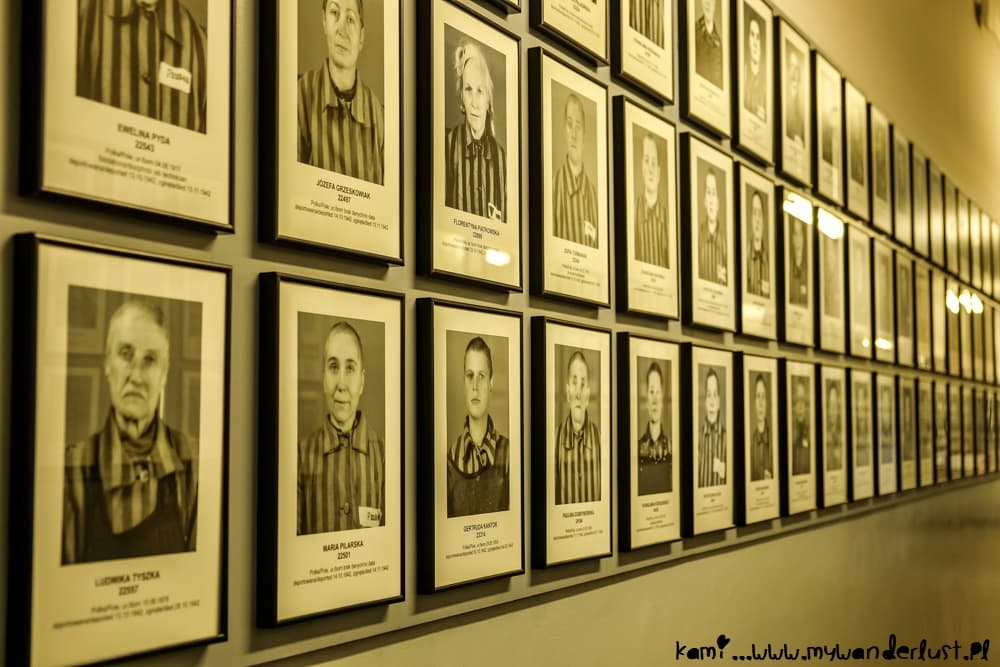
How to visit Auschwitz
You can visit Auschwitz two ways: with a tour from where you are staying in Poland (most likely Krakow, Katowice, Warsaw, or Wroclaw) or independently, reaching the site by car or using public transport. Both options are doable; however, the tour is a slightly better one as everything will be taken care of for you.
There is a wide selection of tours to choose from that depart from Krakow as well as other mentioned cities. Most of them cover more or less the same things: pick-up from your accommodation, transportation to/from Auschwitz and back, the entrance ticket to the concentration camp, and the guided tour on-site.
When I visited Auschwitz, I arrived by train from Warsaw, with the change in Katowice. I was at the museum almost an hour before my guided tour of the site was supposed to start, and despite the poor weather (it was raining on that day), there was no place to hide and wait for the tour. Visitors were not allowed to enter the museum until a few minutes before the tour was about to start. Me and a few other unlucky visitors just stood near the trees, hiding under the umbrella and waiting for our time to enter the site. I can’t say it was a comfortable situation (but at least the weather worked perfectly well for such a sad place to visit). Recently, a new visitors center was opened so hopefully the situation is better.
When using public transport, you need to rely on the schedule of trains/buses and, just in case, plan to be at the site with some extra time ahead; hence a tour is a better option. Still, visiting Auschwitz is doable independently – I did it, and once the tour of the site started, it was really good.

Visiting Auschwitz – practical information
Visiting Auschwitz memorial site is free of charge; however, I recommend joining the tour with the educator provided by the museum. They have a huge knowledge of the place and the tragedy that occurred here and can answer all the questions visitors always have. Tours are available in various languages: Polish, English, German, French, Spanish, Italian, Russian, Czech, and Slovak.
Even if you decide to visit the site independently, you still need to book the entry pass – those with free entrance start in the afternoon. You can buy/reserve your ticket online at the website of Auschwitz Museum here.
Currently, the price for the tour with the educator is 80 PLN for Polish and 90 PLN for other languages. When booking the ticket, you must state your full name and surname – this will be checked later.
Since tickets can sell out quickly, booking one at least a month in advance is recommended. If there are no tickets left for the day you want to visit Auschwitz, you can join the organized tour from Krakow or other cities, as tour operators usually have tickets booked in advance. Due to the sensitive nature of the place, children under 14 years old should not visit Auschwitz Museum.
Once you have your ticket, you need to arrive at the Auschwitz visitors center 30 minutes before your tour starts to go through the security check (it’s rather thorough, similar to the airport), have your ticket inspected (remember to have the ID or passport with you), get the headset for the tour and meet your group. You are allowed to have a bag or backpack with a maximum dimension of 30x20x10 cm; any larger luggage must be left in the paid lockers.
Auschwitz Museum is open every day except January 1st, December 25th, and Easter Sunday. Opening hours vary depending on the month and are as follows:
- 7:30-14:00 in December
- 7:30-15:00 in January and November
- 7:30-16:00 in February
- 7:30-17:00 in March and October
- 7:30-18:00 in April, May, and September
- 7:30-19:00 in June, July, and August
The closing time means the last entrance – after that, you are allowed to stay on-site for an hour and a half. However, if you want to see Auschwitz Museum properly, you need at least 3,5 hours for that – that’s also how long the standard tour with the educator lasts. It is usually divided equally between Auschwitz I and Auschwitz II- Birkenau. A free shuttle bus runs between the two sites every few minutes.
Taking pictures and making videos is allowed in Auschwitz, for individual use, except in two places: the hall with the hair of Victims (block nr 4) and the basements of Block 11. Your educator will remind you not to take pictures there.
Remember what sort of place you are visiting and behave there with respect. It might be obvious for most, but I can’t count how many times I’ve read news about inappropriate behavior in Auschwitz and other similar sites in Poland, so I think it’s worth reminding this is not your typical tourist attraction but a place of one of the greatest tragedy that ever happened in the world.

Getting to Auschwitz independently
If you decide to visit Auschwitz on your own, you must get to the visitors’ center, where your tour will start. The new visitors center, which opened just recently, is located at 55 Więźniów Oświęcimia Street in Oświęcim ( here is the exact location ). If you drive there, there is a large parking lot where you can leave your car before visiting the museum.
If you use public transport, there are both trains and buses you can take to reach Oświęcim. I recommend trains as they are slightly faster and more comfortable; however, some buses stop next to the museum, so that’s convenient. You can check all the connections on this website , where you can also find the location of the bus stop in Oświęcim (there can be three different ones).
The train station in Oświęcim is located at Powstańców Śląskich Street, some 20 minutes walking from the Auschwitz museum. It’s a straightforward way; you can check the map with the directions here . I recommend catching the train that gives you at least an hour between arriving at Oświęcim and when your tour starts.

Auschwitz tour from Krakow
Numerous Auschwitz tours depart from Krakow, so you will easily find the one that suits your itinerary and needs. Here are some recommended ones:
- Auschwitz-Birkenau Museum and Memorial Guided Tour from Krakow
- Auschwitz & Birkenau – Fully Guided Tour from Krakow
- Auschwitz-Birkenau Guided Tour with Private Transport from Kraków
- Auschwitz-Birkenau Guided Tour by Private Transport from Krakow
You can also combine visiting Auschwitz with Wieliczka Salt Mine , another UNESCO-listed site near Krakow and a must-visit place in Poland. Here are the tours that go to both places in one day:
- Day Trip to Auschwitz-Birkenau and Wieliczka Salt Mine from Krakow including Lunch
- Full-Day Tour of Auschwitz and Wieliczka Salt Mine from Krakow
- Auschwitz-Birkenau and Salt Mine Tour with private transport from Krakow
- Combined: Auschwitz Birkenau and Salt Mine private chauffeur from Krakow
If you decide to go to Auschwitz from Krakow on your own, you can take the train from the main train station to Oświęcim. They are rather frequent, more or less every hour, and the journey takes a bit over an hour (depending on the connection, the longest one is 1h20min).
If you want to take the bus, they depart from the MDA bus station, next to the main train station. The price for trains and buses is similar, between 15 and 20 PLN, although trains tend to be cheaper and faster. You can check all the connections and buy a ticket here .

Auschwitz tour from Warsaw
Even if Warsaw, the capital of Poland, is located over 300 km away from Oświęcim, it is possible to go for a one-day Auschwitz tour. However, you can expect a long day, and a large part of it will be spent traveling. But if you are visiting Warsaw only, Auschwitz can be a good addition to your Poland itinerary, so you can better understand the country’s complex history.
Here are some of the recommended Auschwitz tours from Warsaw:
- From Warsaw Auschwitz and Krakow one day tour by train with pick up and drop off
- One day tour to Auschwitz-Birkenau from Warsaw with private transport
Going for the day trip from Warsaw to Auschwitz independently is also possible using trains. You can take the 6 am train to Katowice and then change for the train to Oświęcim, arriving in the town around 10:30. If you decide to do that, you can book your Auschwitz tour for 11:30 or 12:00. On the way back, you can catch the train after 16:00 from Oświęcim to Katowice, and after changing for the train to Warsaw, you will be in the capital after 20:00.

Auschwitz tour from Katowice
Since Katowice is less than 40 km from Auschwitz, it’s easy to go for a day trip. You need to take the local train to Oświęcim, it takes less than 50 minutes, and the connections are more or less every hour.
Or you can go for a tour, here are the Auschwitz tours from Katowice:
- Auschwitz – Birkenau from Katowice
- Auschwitz & Birkenau English guided tour by private transport from Katowice
- Auschwitz tour from Wroclaw
Wroclaw is another popular place to visit in Poland, and since it’s located around 230 km from Oświęcim, you can go for an Auschwitz tour from Wroclaw too. If you decide to do it independently, you can take the train to Katowice and then change for the local train to Oświęcim. A one-way trip should take you less than 4 hours.
Or you can go for a tour; here are the recommended ones from Wroclaw:
- Auschwitz-Birkenau Tour from Wrocław
- Private Full-Day Tour to Auschwitz-Birkenau from Wroclaw
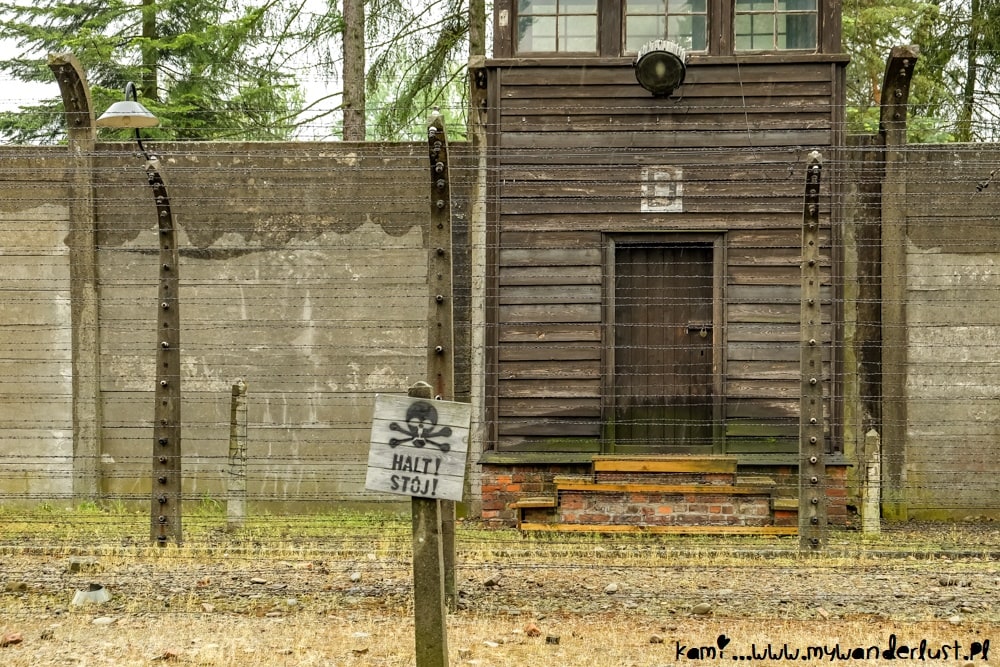
Auschwitz Museum Tour
As for the museum itself, here is what you can expect.
You will start in the oldest part of the concentration camp – Auschwitz I, where the infamous gate with the sign “Arbeit macht frei” (meaning “Work Sets You Free”) is located. Here, you will visit numerous barracks where inmates were kept – now you can see different exhibitions there, showing the reality of Auschwitz and halls with personal belongings taken from arriving prisoners – luggage, shoes, glasses, etc., or hair of Victims. You will learn all about cruel practices here, including medical experiments or torture.
Visiting this part of Auschwitz museum is a very somber experience, and it’s really difficult to comprehend the tragedy that happened in this very place.
Besides the barracks in Auschwitz I, you will also see where the camp commander lived or the first crematorium where Nazis started their experiments with killing using gas. In this part of the Auschwitz tour, you can take pictures everywhere except the two places in Blocks 4 and 11 – they will be clearly marked, and your educator will remind you about this restriction.
The visit to Auschwitz I takes around 1,5 hours. Afterward, together with your group and educator, you will take the shuttle bus to Auschwitz II-Birkenau, located some 3 km away.

Auschwitz II-Birkenau is where around 90% of victims died. It is a huge area that worked kind of like the killing factory, with four gas chambers and crematoriums. This is also where most prisoners arrived – you most likely know the view of the railway tracks and brick gate – that’s Auschwitz II-Birkenau. This part of the visit is mostly outdoors.
You will walk around the area, see the remnants of the camp, visit some barracks inside, and learn all about the horrific tragedy that happened here. When Auschwitz I has a more intimate, even claustrophobic feeling, Auschwitz II-Birkenau can overwhelm you with its scale and enormity.
You will spend around 1,5 hours here, too; afterward, you can take the shuttle bus back to the visitors center when you started your tour.
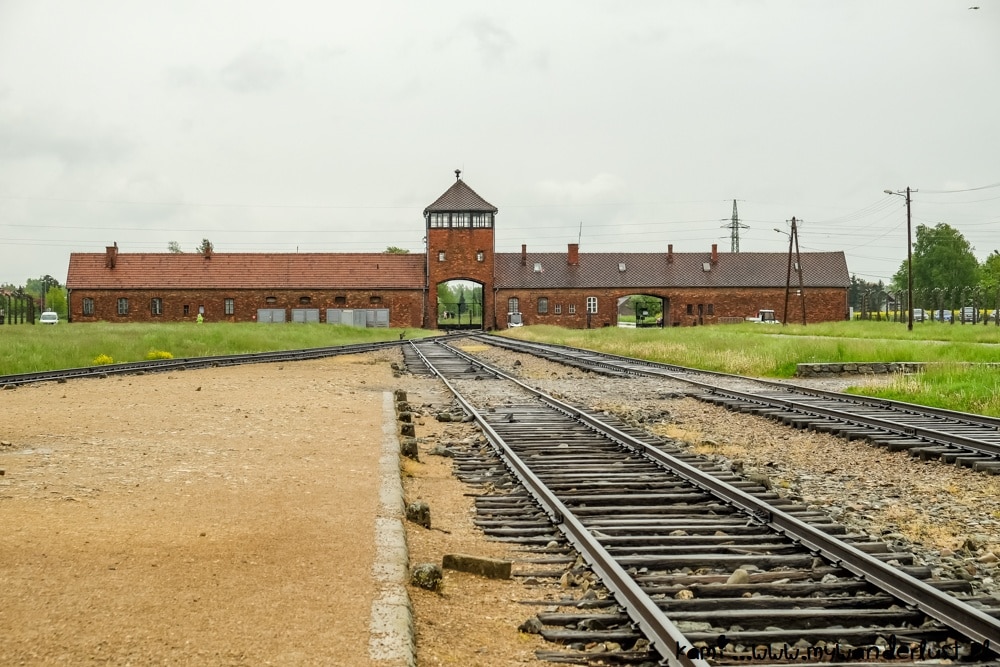
Final thoughts on visiting Auschwitz
Even though I’ve lived in Poland almost my whole life, and Auschwitz has been a familiar topic since I remember, it took me nearly 37 years to finally visit the place. Before I was in different Nazi Germany sites in Poland, mostly in Majdanek in Lublin, so I didn’t feel the need to visit Auschwitz too. But I don’t regret the decision to go there eventually.
You can read and learn about the place, but nothing can prepare you for visiting Auschwitz. Some areas look familiar (after all, pictures of the “Arbeit macht frei” sign or Birkenau gate are present everywhere), but you will still be overwhelmed by the place and seeing it in real life. It’s hard to comprehend the cruelty and tragedy that happened here, and dealing with all the thoughts invading your mind afterward can take a while. It can be one of the most difficult-to-understand places you will ever visit.
Still, despite it all, I think everyone should go to Auschwitz to see where fanaticism and totalitarianism can lead and why we should avoid them at all costs.
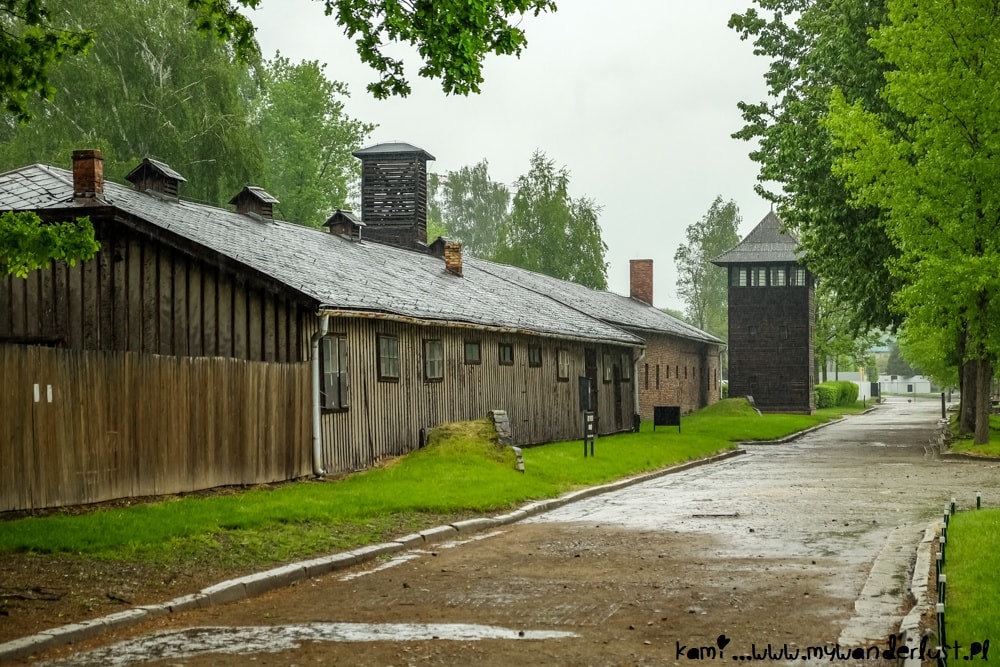
Travel Resources
You can find the best accommodation options at Booking . They have many discounts and excellent customer service. Click here to look for the place to stay in Poland
Never travel without travel insurance , you never know what might happen and better safe than sorry. You can check the insurance policy for Poland here.
I recommend joining organized tours to get to know the place better and to visit more places during your trip. You can find a great selection of tours at Get Your Guide – click here .
For the end I left a few announcements that might interest you:
- Sign up to my newsletter or follow me on Bloglovin to get updates about the new posts
- Join my Facebook group about Eastern Europe, the Balkans and former USSR and connect with fellow travellers and enthusiasts of these regions – just click here!
- I’ve included a few handy links of services and products I personally like and use so you can plan your own trip to Poland too. They are often affiliate links. This means I will get a small commission if you book/purchase anything through my links, at no extra costs for you. Thank you!
LIKED IT? PIN THIS POST FOR LATER!
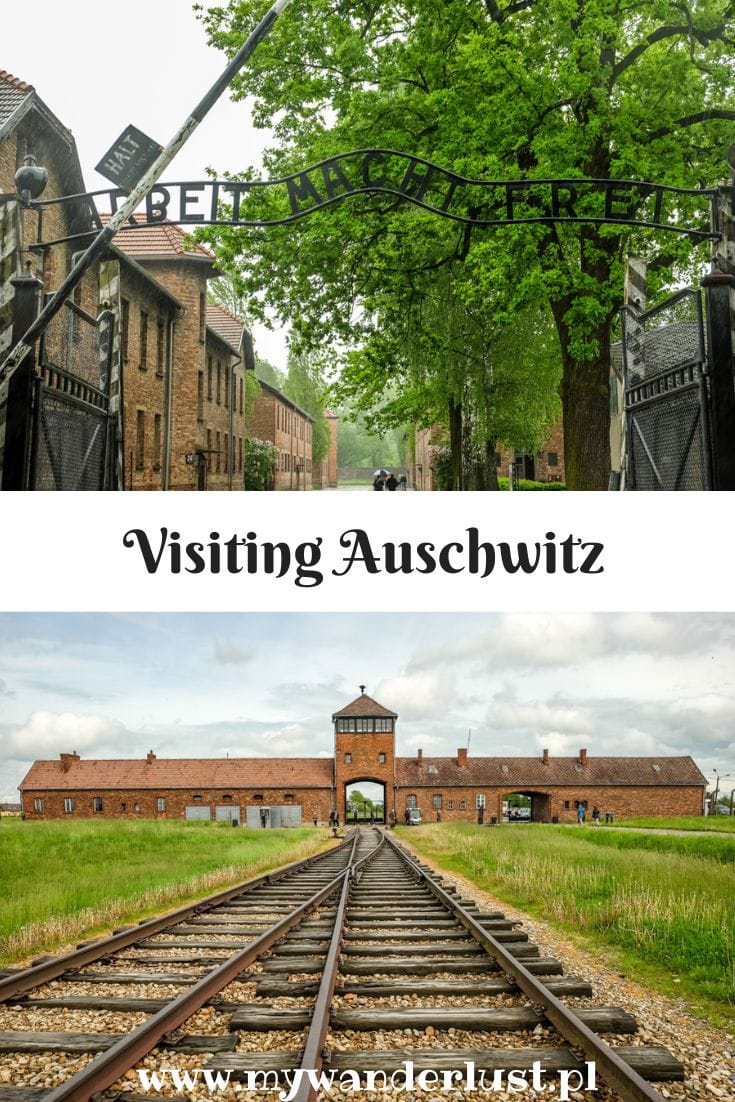
If you enjoyed that post why don't you share it with your friends? That would mean so much to me! Also be sure to join 30.000+ fellow travelers and follow me on Facebook , Twitter , or Instagram for travel updates and even more pictures! If you don't want to miss new posts sign up to my newsletter or follow on Bloglovin !

No Comments
Leave a reply cancel reply.
Sign me up for the newsletter!
Let’s become friends!
Join me on Facebook for even more travel updates!
Kami and the rest of the world

Plan Your Visit
The health and safety of our visitors, staff, and volunteers are our highest priority. To help reduce the risk of transmission of COVID-19, the Museum is open with visitor guidelines and safety measures in place .
Free timed-entry tickets are required to enter the Museum's Permanent Exhibition only. Tickets are not required for Daniel's Story and other special exhibitions.
The Museum is located on the National Mall and is open from 10 a.m. to 5:30 p.m.
Learn more about the Museum's current exhibitions.
Group Reservations
School and tour groups of 55 or more people can use our group reservation system to plan their visits.
The Museum is fully accessible to visitors who use mobility assistive devices.
The Deanie and Jay Stein Museum Shop offers a wide variety of items, including books, gift items, and souvenirs.
The Cafe is open daily for both to-go and dine-in meals.
Museum Events
Find programs and events to attend at the Museum, online, and in your city.
View Calendar
Visit Planner
Our visit planner will help you make the most of your time at the Museum and includes a free gift from the Museum Shop.
This Section
Resources and tips to assist you before, during, and after your visit to the Museum
- Accessibility
- Map of World Remembrance
- Schedule of events
- Anniversary Quotes
- 18 Pillars of Remembrance
- Liberation of KL Auschwitz
- Past anniversaries
- Organisational information
- Accreditations
- Press Releases
- Basic information on Auschwitz
- Acknowledgements
Visitors to the Auschwitz Site
More than 44 million people from all over the world have visited Auschwitz since 1945.
Visitors to Auschwitz in 1945-1957
The Nazi German Auschwitz concentration camp was liberated by the Red Army troops on 27 January 1945. The camp grounds could be visited already in 1945, although visits were relatively limited at that time. After the beginning of organizational work to establish the Museum, the visits became more popular and in 1946 the number of visitors reached 100 thousand. The following year, in 1947, the number reached 170 thousand. During the first ten years of its existence, the Memorial was visited by two million people.
The highest number of visitors
For several decades the former camp was visited annually by approximately 500-600 thousand people; from the beginning of the 21st century that number began to grow. More than a million people from all over the world visit the Museum annually since 2007.
The highest number of visitors was registered in 2014, when more than 1.5 million people visited Auschwitz.
In 2014 most visitors came from: Poland (398 thousand), Great Britain (199), USA (92), Italy (84), Germany (75), Israel (62), Spain (55), France (54), the Czech Republic (52), and South Korea (41).
Guides to the Memorial
Almost 300 licensed guides-educators, specially trained for this purpose by the International Centre for Education about Auschwitz and the Holocaust, and speaking a total of 19 languages, help visitors to get to know the history of Auschwitz. No other museum in the world offers this kind of service.
Who visits Auschwitz Site?
Most of the visitors are young people, many of them come within various educational programmes. It is evident that over the last decade Auschwitz has become the fundamental Memorial Site for the entire continent of Europe. This fact reflects the actual significance of the history of the Holocaust and the trauma of concentration camp prisoners for the understanding of the history of Europe and its present face.
The growing educational dimension of the site indirectly reveals the challenges the contemporary world still faces. Therefore, many politicians and state leaders come to pay tribute to the victims of the Nazis in Auschwitz. They deem it to be their moral responsibility to visit this place – one of the greatest warnings for humanity.
Virtual contact with Auschwitz
Although personal visits to the Memorial Site and direct contact with its history and authenticity cannot be substituted, many people benefit from the Museum’s presence online. In 2014, the number of unique visits to the official Museum website at www.auschwitz.org was 12 million. Additionally, each day, thanks to social media – Facebook , Twitter , YouTube , Instagram i Pinterest – the Auschwitz Memorial reaches almost 200 thousand people on every continent. The Memorial can be also visited virtually at: panorama.auschwitz.org .
From what time are free dates available?
Please be informed that booking of entry passes is available everyday from 12:00 noon (90 days in advance for individual visitors and organised groups)
Is entry to the premises of the Memorial free?
Entry to the premises of the Auschwitz Memorial is free. A fee is only charged for visits with a Museum educator, i.e., a person authorized and prepared to conduct guided tours on the premises.
Why have entry passes been introduced?
For the convenience of visiting and to ensure the safety of visitors the maximum number of persons that may enter the premises of the former Auschwitz I camp in one hour is specified. To this end, every visitor receives upon booking an individual entry pass, a document that grants entry into the premises of the Museum. The entry pass is issued to both individual visitors and those visiting with an educator.
Can I enter the Museum upon arriving without a pre-booked entry pass?
Entrance to the Museum is only possible with a personalized pre-paid entry pass. Reservations can be made at visit.auschwitz.org. The number of entry passes available is limited. We cannot guarantee the availability of entry passes on site on the day of the visit.
Should I have the entry pass on me?
Yes. Every entry pass has an individual bar code. The entry pass may be printed or saved, for example to a tablet PC or mobile phone. Entry Pass for Guided Tours for a tour without an Educator authorizes the holder indicated with a name and surname of proof of identity to explore the Museum upon presentation at the entrance to the Museum.
I paid for the reservation but have not received the entry pass, what should I do?
Entry passes are sent automatically by the system. If such an e-mail is not visible in your Inbox, it may have ended up in the spam folder. Check the spam folder. If you do not find the entry passes in your spam folder, contact us via email [email protected].
How do I book entry to the Museum without an educator?
In the system, select the following options: Visit for individual --> select a date --> Tour for individuals without an educator
How do I book a tour for an organised group?
In the system - after user registration - you should send a booking request via the booking form: Visit for groups. After sending the query you will receive an answer by e-mail.
Is there a tour organised with an educator for individual visitors?
Yes. Such tours are organised throughout the year in several languages and at specified hours. You can book such tours in the system. You should select the following options:
Visit for individuals --> select a date --> select language --> select the visiting hour --> basket
What should I do if I want to book an extended tour?
The panel has a “Visit for groups” tab, where you will find several tour options, e.g. 1- and 2-day study visits, tours for middle school groups etc. If you cannot find the desired tour option, please contact the visitors’ service centre: [email protected]
Can I make changes to my reservation?
The system allows you to make changes to reservation parameters (day, hour or tour language). You can make changes within available dates. To effect changes, please contact our visitor’s service centre ([email protected]). Changes are limited to entry passes for organised groups.
Is the chosen hour of the visit the hour of entry into the Museum?
Yes. Please remember to leave bulky luggage in a car or bus before entering the Museum; organised groups must pick up their headsets and proceed to the security check. We recommend you arrive at least 30 minutes before the start of the tour.
What happens if I am late for my reserved hour?
An individual visitor will be able to enter the Auschwitz Memorial in the first available time slot in between the hours for individual visitors without an educator.
Visitors who made a group reservation with an educator will have to reserve another entry time. These groups must start the visit at the specified time.
Organised groups of individual visitors who made a reservation for a visit with an educator will be able to enter the premises in the first available hour. It may, however, result in a shorter visiting time or impossibility of entering the Museum.
Will I receive a refund if I am late for a booked tour with an educator and cannot enter the Museum?
Due to the limited number of entry passes, we recommend making a prior reservation. At the moment there is no possibility of refunding payment for a tour with an educator; therefore, we ask visitors to make an informed and thoughtful decision prior to the reservation.
Can I use a drone at the Auschwitz-Birkenau Memorial?
The grounds of the Memorial are in the no-fly zone DRA-P EP P20. The permit to fly over the Museum grounds is issued only in special cases (e.g. TV programmes or documentaries). Permissions are not given to recreational and private flights over the Museum grounds. More at http://auschwitz.org/epp20
Can I cancel my reservation?
Reservations can be cancelled, but the cost of visits with an educator cannot be refunded.
Copyright © 2014 Państwowe Muzeum Auschwitz-Birkenau. All rights reserved

APRIL SALE: Book now and get up to 60% off!
Tours & Trips including Auschwitz 2024/2025
Find the right tour for you through Auschwitz. We've got 106 adventures going to Auschwitz, starting from just 3 days in length, and the longest tour is 28 days. The most popular month to go is August, which has the largest number of tour departures.
106 Auschwitz tour packages with 1,109 reviews
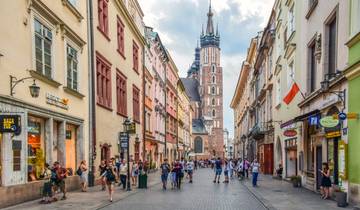
- In-depth Cultural
Krakow & Auschwitz
I felt like I was the only person involved in this "group" tour. When I booked this I was under the impression I would be with a group. I never met a consistent guide or any other consistent person on the same activities. It seemed like the accommodations and tours were arranged for me through TourRadar/Euroadventures. But quite honestly, I could have done that myself with better accommodations.

- Christmas & New Year
Krakow, Auschwitz & Wieliczka Salt Mine - 4 Days
The tour guide absolutely makes this tour so special! Apart from a professional and knowledgeable delivery, he makes fantastic food recommendations and even scheduled a piano concert last minute (front row seats)!
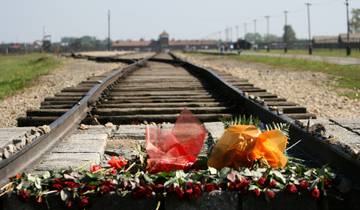
Krakow, Auschwitz, Enamel Factory & Wieliczka Salt Mine - 4 Days
It was a pretty good experience and started with excellent tour guide Seweryn Osowski (Krakow Tour Guide) he is a local and speak English so we are kosher with communication. Visiting Auschwitz is astounding and educational seeing the exact concentration camp is mind-blowing. Schindler's factory and artifacts are remarkable. I recommended these areas to be visited by younger generation to learn from history, and avoid the same mistakes Nazi made. By the way St. Mary's Basilica in Krakow square Gothic altarpice is mesmerizing.
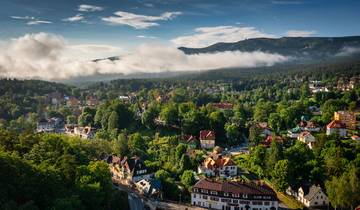
- Coach / Bus
Highlights of Southern Poland
The Poland tour was excellent! The group leader Beata was awesome and all guidance, planning and itinerary was wonderful. Totally recommended!!

- Sightseeing
Pearls of Poland (for couples)
I think this tour is just right for covering the best sites in Poland in a week's time. I doubt few travelers know anything about Poland's history. So a brief outline of the essentials at the start of the tour would facilitate understanding in Warsaw and Krakow. Our guides were excellent, but if they had structured their presentations, they would have communicated the details at the sights visited much better. Since we two were the only tourists on this tour in this Covid-marred year, we traveled with a driver (Piotr) who was tops.

6 days in Krakow and Szczawnica- private exclusive tour for 2 people
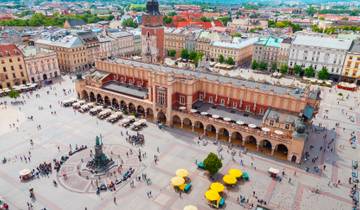
7 days in Krakow and Szczawnica- private exclusive tour for 2 people


Highlights of Poland (Classic, 10 Days)
The trip was great. All the things we saw were awesome. Poland is a lovely country. The hotels were all 4 or 5 star -- very nice. And the coach was excellent -- with 2 doors for more efficient boarding, and a toliet for emergencies. The guides were great too.

Highlights of Poland
Thanks for a great trip, we thoroughly enjoyed it. It was my first time with Explore, and I was impressed. Already looking at booking one with you for next year.
- 10% deposit on some dates Some departure dates offer you the chance to book this tour with a lower deposit.

Tailor-Made Private Trip to Southern Poland with Daily Departure
- Book With Flexibility This operator allows you to rebook your dates or tours with them for free, waiving change fees.

Portrait of Poland
Our tour guide Kasia was smiling lady, friendly, well organized and caring person. She was very knowledgeable about her country Poland and made our trip very successful . The Driver Franco was smiling, helpful person and was driving very careful.

- Walking Adventure
Best of Poland (11 Days)
Everything was outstanding. Coach, Kate (tour guide), all other guides (except one), hotels, meals, itineraries, driver, sights, tours. Two issues. Our Auschwitz tour guide had a very, very pronounced accent and spoke very quickly making it difficult to understand him. Extremely knowledgeable but needs to slow down his speech. Loved that every tour guide throughout the country was a "local". The other issue was that the optional tours available were charged in Euros and not Polish money. Other than those "minor issues" the tour was truly outstanding, interesting, educational and fun!
- €100 deposit on some dates Some departure dates offer you the chance to book this tour with a lower deposit.
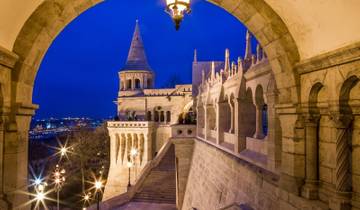
Best of the East
It was good we enjoyed

Tailor-Made Private Poland Tour with Daily Departure

Highlights of Poland (Small Groups, 10 Days)
What people love about auschwitz tours.
Did their Krakow, Poland trip in December during the Christmas markets. Really a great trip and experience. Everything was very organized, had really good hotel near the square/old town (I booked the 3-star hotel, private room option with my husband), guides were very good & knowledgeable and the excursions/tours were very good. We also received a lot of extra information and recommendations for things to do and places to go (food and drink too) in our free time which was really nice and helpful. I was a bit nervous reading a few of the reviews here on Yelp but our experience was fantastic and nothing like what some others wrote in their reviews. Krakow was an amazing city and one of the most beautiful in Europe. Definitely recommend this trip and company.
Seweryn was a fantastic tour guide and very knowledgeable about Krakow's history. I enjoyed learning about the many historical and religious details we saw around Krakow. He also went above and beyond to help me when I had trouble purchasing train tickets, and when I got sick offered to reschedule one of the tour days. I really enjoyed his tour and would highly recommend it.
I had a great first time experience of Krakow through this tour. My tour guide Seweryn was very friendly, flexible, organised and helpful and made the whole process very smooth. The trips to the mine, factory and camps were well laid out and gave me plenty of time for independent sightseeing and fun. If you want to come to Krakow I would highly recommend you do a trip this way!

Peacock’s ‘The Tattooist of Auschwitz’…
Share this:.
- Click to share on Facebook (Opens in new window)
- Click to share on X (Opens in new window)
Daily e-Edition
Evening e-Edition
- Election 2024
- Restaurants
- Real Estate
- Things To Do
Florida Jewish Journal Palm Beach Jewish News
Peacock’s ‘the tattooist of auschwitz’ tackles a holocaust love story based on real events.

(JTA) A Holocaust romance, sparked when a prisoner at Auschwitz-Birkenau is forced to tattoo a number on another prisoner’s arm and they fall in love at first sight, sounds almost implausibly uplifting for a story set in a concentration camp.
But “The Tattooist of Auschwitz,” a new television series, is based on two Slovakian Jewish prisoners — Lali Sokolov and Gita Furman — who really did meet at Auschwitz, survive, marry and move to Australia together after the war. The six-part drama premiering May 2 on Peacock and Sky draws from a 2018 novel of the same name by Heather Morris, who interviewed Sokolov over three years before his death in 2006.
“It’s what drew me in, when I read the book a few years ago — that something like this could happen was so surprising,” Jonah Hauer-King, who plays young Lali at Auschwitz, told the Jewish Telegraphic Agency. “Any kind of love at first sight is surprising, let alone in a context like this.”
Alongside Hauer-King, known for his role as Prince Eric in Disney’s live-action “The Little Mermaid,” Academy Award nominee Harvey Keitel plays Lali’s older counterpart in his late 80s, recounting his experiences to Morris (Melanie Lynskey) from his home in Melbourne shortly after Gita (Anna Próchniak) has died.
Directed by Tali Shalom-Ezer and executive produced by Claire Mundell, the series will also feature an end-title song by the legendary Jewish artist and EGOT holder Barbra Streisand. “Love Will Survive” is Streisand’s first recording for a TV series, set to release ahead of the series premiere.
“Because of the rise in antisemitism around the world today, I wanted to sing ‘Love Will Survive’ in the context of this series, as a way of remembering the six-million souls who were lost less than 80 years ago,” Streisand said in her announcement. “And also to say that even in the darkest of times, the power of love can triumph and endure.”
“The Tattooist of Auschwitz” joins a crop of World War II-period TV series inspired by buzzy bestselling novels. Hulu recently launched “We Were the Lucky Ones,” based on Georgia Hunter’s 2017 novel about her Jewish family’s dispersion across the world. And in just the past year, Netflix adapted “All the Light We Cannot See” from Anthony Doerr’s 2014 war novel and aired “Transatlantic,” about Varian Fry’s mission to rescue Holocaust refugees, based on Julie Orringer’s 2019 book “The Flight Portfolio.”
Like the other networks, Peacock has billed its series as “inspired by the real-life story,” with the added interest of a real-life romance “in the most horrific of places.” But preserving the authenticity of Lali’s story in a TV show, based on a novel that fictionalized his testimony 12 years after his death, comes with a new set of challenges — especially when the novel was critiqued for inaccurately portraying life in Auschwitz.
Morris’s “The Tattooist of Auschwitz” raised eyebrows from the Auschwitz Memorial in 2018, which said the book “cannot be recommended as a valuable position for those who wish to understand the history of the camp” and is “almost without any value as a document.”
A report from Wanda Witek-Malicka of the Auschwitz Memorial Research Center said the book’s “based-on-facts” marketing, combined with its international success — selling over 12 million copies with translations into more than 40 languages — raised concern that many readers might treat it as a historical source on the realities of Auschwitz, despite several errors and misleading representations.
These inaccuracies include the number that Lali was forced to tattoo on Gita’s arm in the story’s pivotal scene. In the book, she is branded with the number 34902, but Gita herself said in a testimony to the USC Shoah Foundation that her number was 4562, a claim supported by evidence from the Auschwitz Memorial.
Witek-Malicka also disputed a plot line in which Lali obtains penicillin for Gita’s typhus in January 1943, saying this event was “impossible” because penicillin only became readily available after the war. Elsewhere, the book depicts a revolt by the “Sonderkommando,” predominantly Jewish prisoners who were forced to work in the gas chambers and crematoriums. Though the Sonderkommando did revolt at Auschwitz in 1944 and set fire to one crematorium, the book says they blew up two.
The sexual relationship between an SS commander and a Jewish prisoner in the book also raised questions for Witek-Mailcka, who said the possibility of such a long-term relationship was “non-existent.” She also pointed out that the building where the characters supposedly rendezvoused was only completed in January 1945 and never put into use.
Meanwhile, Lali’s son Gary told the New York Times he was bothered to see his father’s name misspelled “Lale” in the book.
Some of these inaccuracies have been corrected in the TV series, which depicts Gita’s original number and corrects the spelling of Lali’s name. But Shalom-Ezer told JTA that she relied heavily on the judgment of Morris, who worked as a story consultant for the show.
“Heather devoted her life to this,” Shalom-Ezer told JTA. “I’m not just talking about the last three years of Lali’s life, when she spent three times a week sitting with him for hours, listening to his story — all the 11 years it took her to find a publisher for the book and even later, she just devoted herself to this. So I felt confident enough that I believe her, that she’s trying to tell us the story in the most genuine way she can, as close as possible to his truth.”
Morris herself has said that she did not aim to write an academic historical account, only to share Lali’s memories of his life.
“It is Lali’s story,” she told the New York Times in 2018. “I make mention of history and memory waltzing together and straining to part, it must be accepted after 60 years this can happen but I am confident of Lali’s telling of his story, only he could tell it and others may have a different understanding of that time but that is their understanding, I have written Lali’s.”
In its TV form, “The Tattooist of Auschwitz” nods to the fickle nature of memory, particularly the memory of a traumatized person. Sometimes the viewer sees one version of events — for example, Lali discovering that a younger friend was selected for the gas chamber at random — and then the older Lali remembers a different story, in which his own number was on that selection list, only changed to his friend’s after the Nazis employed Lali as a tattooist.
The character Lali shares some of these revisions with the character Morris. Others come to him after she has left, when he is alone and haunted by the dead who occupy his kitchen at night. The series shows Lali talking to these ghosts, bargaining with his memory and making deals with the guilt of survival.
“I think that this is the nature of trauma, it creates a kind of dissociation from what happened so you cannot really remember it correctly,” said Shalom-Ezer. “So the team and I, we thought that this is the most authentic way to portray a man with a trauma that for the first time is trying to share his story with someone.”
To read more content visit www.jta.org
More in Palm Beach Jewish News

‘We will dance again,’ assures New York exhibit on Nova music festival

‘Be the Witness’ virtual reality project features five Oct. 7th survivors

Brandeis extends transfer deadline, appealing to Jewish students distressed by campus anti-Israel unrest

Holocaust Heroes Worldwide participates in the Torah Project
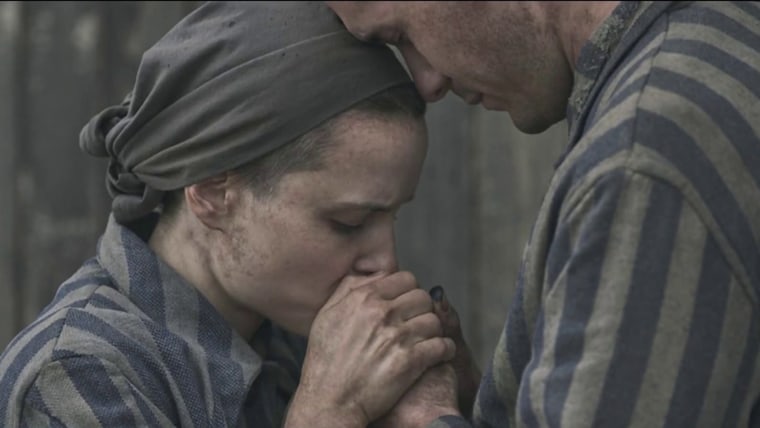
Matthew Hussey shares tips to finding love, owning your happiness

Vivica A. Fox on cameo-filled new movie, 'blessed' to be turning 60

Pop culture roundup: ‘The Big Door Prize,’ sexy water, more

Haley joins mom Hoda on TODAY for Bring Your Kids to Work Day
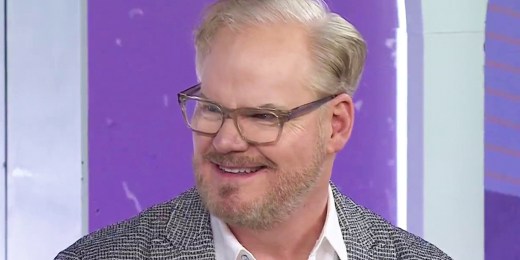
Jim Gaffigan talks 'Unfrosted,' new passion for whiskey-making!

The 3rd Hour of TODAY celebrates Take Your Kids to Work Day

Carol Burnett recalls short-lived gig working at a movie theater

Reggie Bush to get his Heisman Trophy back after 14 years

Caleb Williams on possibly being No. 1 overall pick at NFL draft

Hoda Kotb had an interesting remedy for jammed toe: Scotch tape!
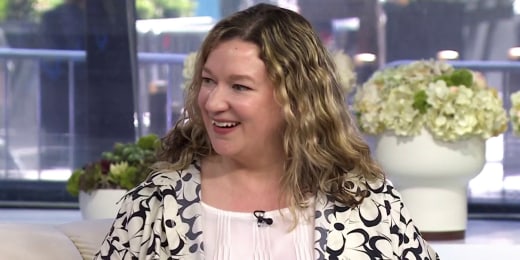
Author Holly Gramazio talks ‘The Husbands,’ takes fan questions
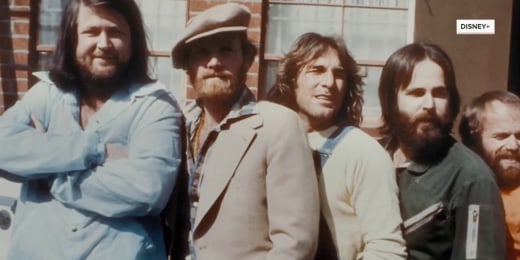
'Girls State,' 'Livin' On A Prayer' and more documentaries to watch
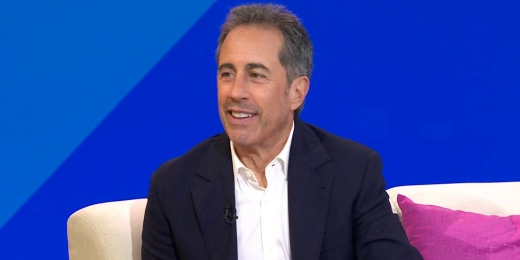
Jerry Seinfeld talks 'Unfrosted,' turning 70, Larry David and more

Jerry Seinfeld helps Hoda & Jenna solve social dilemmas

Stars of ‘Dora’ announce a second season of rebooted series

Influencer Iskra Lawrence shines a light on her infertility journey

Hoda sits down with Carissa Moore on ‘Making Space’ podcast
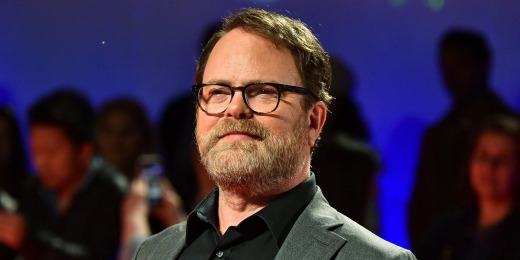
Hotel pulls off hilarious 'Office' Jell-O prank on Rainn Wilson
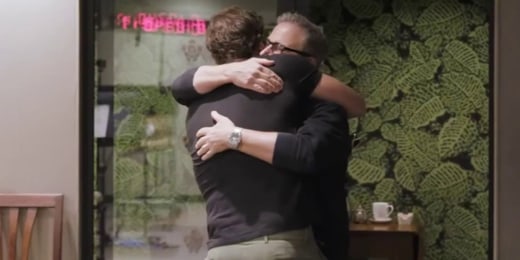
See John Krasinski reunite with Steve Carell for ‘IF’

Sarah Cooper talks working alongside comedy greats in 'Unfrosted'
Nbc news now, new series ‘the tattooist of auschwitz’ tells the story of holocaust survivors finding love.
It’s been nearly 80 years since the end of the Holocaust, but the harrowing experiences of survivors are still coming to light. One of those stories is the focus of a new Peacock series, “The Tattooist of Auschwitz,” inspired by the true story of two survivors who met and fell in love in the Auschwitz-Birkenau concentration camps. NBC News’ Savannah Sellers spoke with actor Jonah Hauer-King about his role in the series. April 19, 2024
Best of NBC News
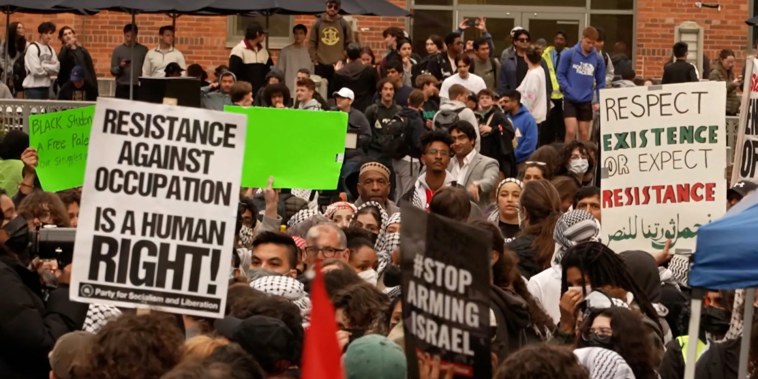
Pro-Palestinian demonstrations grow at George Washington University
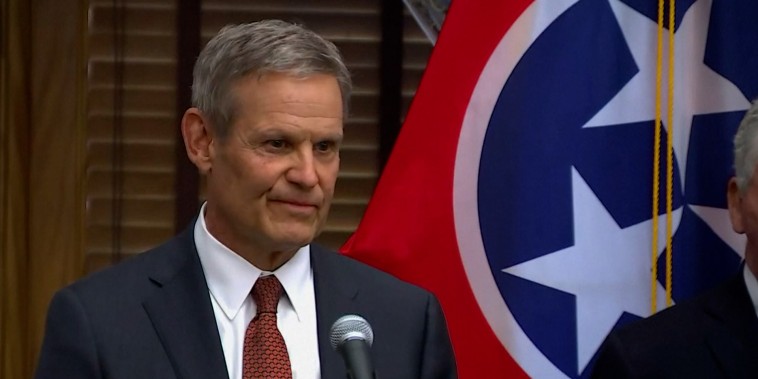
NBC News Channel
Tennessee governor to sign bill allowing teachers to carry guns in school.
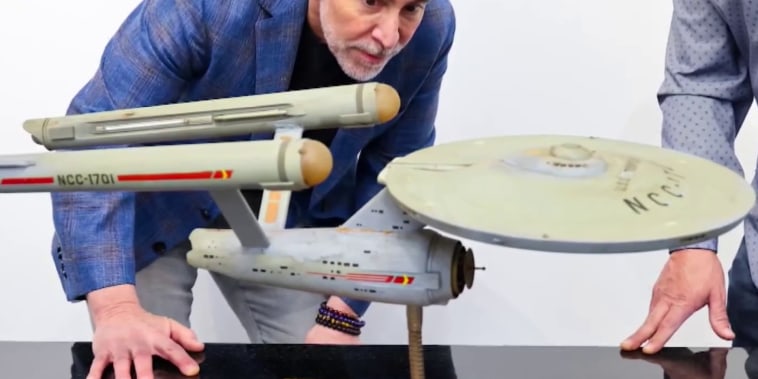
'Star Trek' USS Enterprise model found on eBay after nearly 50 years
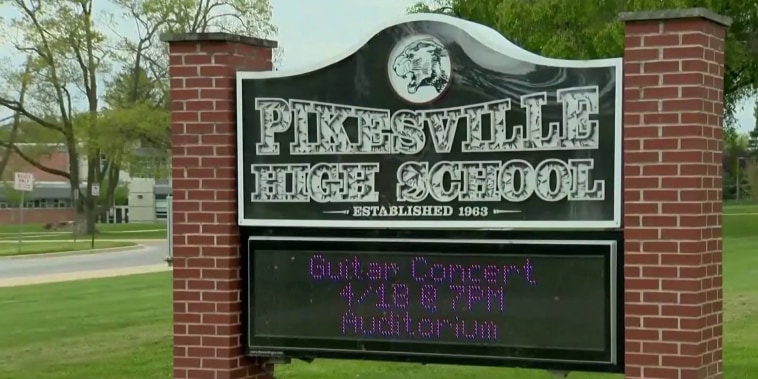
Maryland educator accused of using AI to frame the school's principal
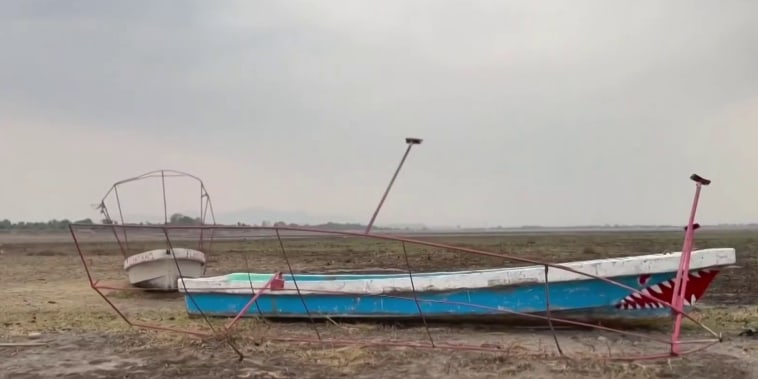
Major cities in Mexico running out of water as extreme heat continues
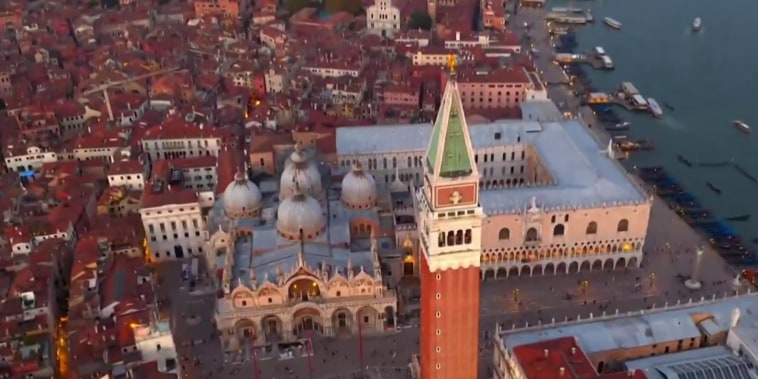
Venice introduces world's first tourist entrance fee
The Definitive Voice of Entertainment News
Subscribe for full access to The Hollywood Reporter
site categories
Melanie lynskey says husband jason ritter is “sacrificing” his acting career for her success.
The 'Yellowjackets' star says the 'Parenthood' alum has been passing on roles in support of her work, which she is "so grateful" for.
By Tatiana Tenreyro
Tatiana Tenreyro
- Share this article on Facebook
- Share this article on Twitter
- Share this article on Flipboard
- Share this article on Email
- Show additional share options
- Share this article on Linkedin
- Share this article on Pinit
- Share this article on Reddit
- Share this article on Tumblr
- Share this article on Whatsapp
- Share this article on Print
- Share this article on Comment

Melanie Lynskey is praising husband Jason Ritter for putting his own acting career on hold for her success.
“He’s the most supportive person in the world,” the Yellowjackets star told People magazine about Ritter, whom she began dating in 2013 and married in 2020. “The last few years we’ve had this role of like, whoever’s job makes the most sense, whether it’s the most exciting career wise or it’s more money, we would prioritize the one that was going to help move the person’s career forward.”
Related Stories
Harvey keitel relives holocaust horror in new 'tattooist of auschwitz' trailer, devery jacobs, lamar johnson to receive honorary canadian screen awards.
The actress also credited the Parenthood alum for encouraging her to take on her memorable role in the first season of The Last of Us . “He was like, ‘There’s no way you’re not going to do The Last of Us. You have to do it,'” she recalled. “So it was months and months that he was just being a dad and hanging out with me, and I’m so, so, so grateful to him.”
Lynskey continued, “I think a lot of men don’t have that kind of self-esteem and that respect for their partner. I’m grateful that I have someone who does.”
The Ever After star’s career has experienced a renaissance since being cast in Showtime’s hit series Yellowjackets , which earned her two Emmy nominations and a Critics Choice Award. Besides her recent stint on The Last of Us , she’s also since starred in Hulu’s Candy and Peacock’s upcoming The Tattooist of Auschwitz .
Ritter recently made cameos on Candy and The Last of Us . He also starred in Netflix’s superhero series Raising Dion , which was canceled after two seasons in 2022.
THR Newsletters
Sign up for THR news straight to your inbox every day
More from The Hollywood Reporter
The abbey nightclub in west hollywood sold for $27m (report), the 10+ best online florists for mother’s day flower deliveries, wayfair dropped early way day deals ahead of its biggest home and decor sale of the year, patrick’s roadhouse is closing: its namesake actor mourns the loss, the best zero-waste swaps from hollywood-loved home and beauty brands, the pioneer woman’s spring launch is a mother’s day dream.
- Manage Account
Barbra Streisand’s New Single ‘Love Will Survive’ for ‘Tattooist of Auschwitz’ Is Here: Stream It Now
"Even in the darkest of times, the power of love can triumph and endure," the vocalist said.
By Hannah Dailey
Hannah Dailey
- Share this article on Facebook
- Share this article on Twitter
- Share this article on Flipboard
- Share this article on Pinit
- + additional share options added
- Share this article on Reddit
- Share this article on Linkedin
- Share this article on Whatsapp
- Share this article on Email
- Print this article
- Share this article on Comment
- Share this article on Tumblr

Barbra Streisand is back with her first new song in six years, releasing “Love Will Survive” for Peacock’s The Tattooist of Auschwitz Thursday (April 25).
Elon Musk & Rupert Murdoch No Longer Receiving Ruth Bader Ginsburg Award After Criticism From…
The emotional track finds the eight-time Grammy winner adding her famous vibrato to poetic lyrics penned by Charlie Midnight, crooning over cinematic piano and strings. “Until I’m near you, somehow I’ll hear you,” she sings. “Your voice will echo inside me forever.”
Trending on Billboard
“Because of the rise in antisemitism around the world today,” Streisand said in a statement, “I wanted to sing ‘Love Will Survive’ in the context of this series as a way of remembering the six-million souls who were lost less than 80 years ago. And also to say that even in the darkest of times, the power of love can triumph and endure.”
Streisand’s first-ever recording for a TV series, “Love Will Survive” serves as the end title for The Tattooist of Auschwitz , which premieres on Peacock May 2. The ballad was composed by Hans Zimmer, Kara Talve and Walter Afanasieff.
The Tattooist of Auschwitz tells the story of a Slovakian Jewish man named Lali, played by Jonah Hauer-King. After being deported to the deadly concentration camp Auschwitz, he’s forced to tattoo identification numbers on incoming prisoners’ arms.
Listen to Barbra’s new single below.
Get weekly rundowns straight to your inbox
Want to know what everyone in the music business is talking about?
Get in the know on.
Billboard is a part of Penske Media Corporation. © 2024 Billboard Media, LLC. All Rights Reserved.
optional screen reader
Charts expand charts menu.
- Billboard Hot 100™
- Billboard 200™
- Hits Of The World™
- TikTok Billboard Top 50
- Song Breaker
- Year-End Charts
- Decade-End Charts
Music Expand music menu
- R&B/Hip-Hop
Culture Expand culture menu
Media expand media menu, business expand business menu.
- Business News
- Record Labels
- View All Pro
Pro Tools Expand pro-tools menu
- Songwriters & Producers
- Artist Index
- Royalty Calculator
- Market Watch
- Industry Events Calendar
Billboard Español Expand billboard-espanol menu
- Cultura y Entretenimiento
Honda Music Expand honda-music menu
- Entertainment
- TV/Streaming
- What to stream in May 2024: ‘Doctor Who,’ ‘Dark Matter,’ ‘Unfrosted’
Now Streaming
Here’s what’s coming to Netflix, Hulu, Disney+, Max, Prime Video, Peacock, Paramount+ and other streaming services in May.
Jeff Daniels is “A Man in Full” (Netflix, May 2), an Atlanta real estate mogul who finds himself on the verge of losing his business and his status, in the limited series adapted from the novel by Tom Wolfe. Producer David E. Kelly scripts the entire series, and Diane Lane, William Jackson Harper and Bill Camp co-star.
“Shardlake” (Hulu, May 1), a limited series based on the novel by C.J. Sansom, stars Arthur Hughes as a lawyer sent by Thomas Cromwell (Sean Bean) to investigate the murder of a commissioner at a remote monastery in 16th-century England. It’s a medieval murder mystery!
The limited series “The Tattooist of Auschwitz” (Peacock, May 2), inspired by the real-life story of two Jewish Holocaust survivors, stars Harvey Keitel as an aging widower who, 60 years after he was liberated from Auschwitz, tells his story to a novice writer (Melanie Lynskey).
Jerry Seinfeld directs and stars in “Unfrosted” (Netflix, May 3), a comic (and freely adapted) take on the cutthroat race between cereal rivals Kellogg’s and Post Cereal to create the first instant breakfast pastry: the Pop-Tart. Melissa McCarthy, Hugh Grant and Amy Schumer co-star.
A physicist and family man (Joel Edgerton) is abducted and pulled into an alternate reality and fights to find his way back home in the science fiction thriller “Dark Matter” (Apple TV+, May 8). Based on the bestselling novel by Blake Crouch, the limited series co-stars Jennifer Connelly and Alice Braga.
Ncuti Gatwa is the 15th Doctor in the new season of “Doctor Who” (Disney+, May 10), under the creative guidance of Russell T. Davies, returning to the series he reinvented for the 21st century.
Jennifer Lopez heads into deep space to capture a renegade robot in “Atlas” (Netflix, May 24). The science fiction thriller co-stars Simu Liu, Sterling K. Brown, Lana Parrilla and Mark Strong.
Brooke Shields is “Mother of the Bride” (May 9) in the new romantic comedy.
“Bodkin: Season 1” (May 9), a comic take on the true-crime genre, stars Will Forte as a podcaster chasing a story in a small Irish town.
The limited series “Eric” (May 30) stars Benedict Cumberbatch as a puppeteer for a children’s TV show who spirals into guilt and delusion after his son goes missing.
The third season of the hit romantic drama “Bridgerton” (May 16) takes on the romance between Penelope Featherington (Nicola Coughlan) and Colin Bridgerton (Luke Newton).
International passport: “Beautiful Rebel” (May 2) dramatizes the life of Italian rock icon Gianna Nannini, and the animated fantasy “My Oni Girl” (May 24) arrives from Japan.
In “Turtles All the Way Down” (May 2), a teenager (Isabela Merced) struggling with OCD gets involved with the disappearance of a reclusive billionaire.
Zac Efron stars in “The Iron Claw” (May 10), based on the tragic true story of the Von Erich wrestling family in the 1980s.
The new spinoff series “Pretty Little Liars: Summer School” (May 9) stars Bailee Madison and Chandler Kinney.
The musical comedy “Home Sweet Rome!: Season 1” (May 16) sends a California teenager (Kensington Tallman) to Italy with her dad and Italian pop sensation stepmom.
“The Killing Kind: Season 1” (May 14), based on Jane Casey’s bestselling book of the same name, is a thriller starring Emma Appleton as a brilliant barrister and Colin Morgan as a manipulative client.
International passport: Mads Mikkelsen stars in the award-winning historical drama “The Promised Land” (May 30) from Denmark.
The documentary “The Contestant” (May 2) chronicles the bizarre reality show that became a phenomenon in Japan, and “Lainey Wilson: Bell Bottom Country” (May 29) profiles the country-music sensation.
Most Read Entertainment Stories
- Harvey Weinstein’s rape conviction is overturned by New York’s top court VIEW
- ‘The Bachelorette: Season 21,’ featuring Jenn Tran, films in Seattle WATCH
- From Salvador Dalí to local artists, must-see Seattle exhibits in May
- Photographer alleges he was forced to watch Megan Thee Stallion have sex and was unfairly fired
Prime Video
The reality series “The GOAT” (May 9) pits reality TV celebrities in competition for the title of “Greatest of All Time.”
“Star Wars: Tales of the Empire” (May 4) is a new animated series in the franchise.
Unavailable in any form for decades, the original 1970 Beatles documentary “Let It Be” (May 8) has been restored and remastered by Peter Jackson. Also arriving are the new documentaries “The Beach Boys” (May 24) and “Jim Henson: Idea Man” (May 31).
André Holland headlines the limited series “The Big Cigar” (May 17), a caper inspired by a true story surrounding Black Panther founder Huey P. Newton.
The documentary “Kiss the Future” (May 7) looks at how an underground community in Sarajevo used art and music to affect change during the Bosnian war.
Also debuting are Season Five of “The Chi” (May 10) and the third and final season of “Evil” (May 23).
The road movie comedy “Drive-Away Dolls” (now streaming) from Ethan Coen stars Margaret Qualley and Geraldine Viswanathan as best friends pursued by criminals.
Other services
Juliette Binoche and Benoit Magimel star in the epicurean drama “The Taste of Things” (AMC+ and Acorn TV, May 10), which was France’s entry at the Academy Awards.
From Australia comes the crime thriller “Scrubland” (Sundance Now, May 2), and the courtroom drama “The Truth” (AMC+, May 27) arrives from Israel.
The opinions expressed in reader comments are those of the author only and do not reflect the opinions of The Seattle Times.
- Search Please fill out this field.
- Manage Your Subscription
- Give a Gift Subscription
- Newsletters
- Sweepstakes
- Entertainment
Melanie Lynskey Says Husband Jason Ritter Is 'Genuinely Sacrificing' Roles for Her Career Success (Exclusive)
'The Tattooist of Auschwitz' actress tells PEOPLE she and her husband since 2020 pick roles based on what will "help move the person's career forward"
:max_bytes(150000):strip_icc():format(webp)/Dana-Rose-Falcone_WebReady_02-cedae131ab8d4905921e9154611fa210.jpg)
Emma McIntyre/Getty Images for WarnerMedia
The saying goes that behind every great man is a great woman, but that goes both ways in Melanie Lynskey and Jason Ritter ’s marriage.
Lynskey, 46, finds herself hitting a career peak after 30 years in Hollywood, receiving critical acclaim for her recent starring roles in Candy , The Last of Us and Yellowjackets . She credits Ritter, 44, with supporting her and their 5-year-old daughter while she focused on work.
“He's the most supportive person in the world,” Lynskey, who stars next in The Tattooist of Auschwitz , tells PEOPLE in this week’s issue. “The last few years we've had this role of like, whoever's job makes the most sense, whether it's the most exciting career wise or it's more money, we would prioritize the one that was going to help move the person's career forward.”
The New Zealand native adds that this comes at the expense of Ritter’s career, as he’s been “getting offered stuff all the time” and has been passing on those offers to support Lynskey.
“It's like genuinely sacrificing,” she says.
Kailey Schwerman/SHOWTIME
Ritter constantly gushes about Lynskey on social media, from declaring he loves her "with my whole heart" on Instagram on Valentine's Day to cheering her on after her Emmy nomination and the finale of Yellowjackets on X (formerly known as Twitter).
Lynskey does the same, shouting him out on Instagram for "being the best dad our sweet daughter could possibly have" and giving him a mention when she won a Critics Choice Award in 2022 .
When Lynskey received the offer to appear in The Last of Us after filming Candy and Yellowjackets back to back, Ritter, who she married in 2020, urged her to take the part.
“He was like, ‘There's no way you're not going to do The Last of Us . You have to do it,’” Lynskey says. “So it was months and months and months that he was just being a dad and hanging out with me, and I'm so, so, so grateful to him. I think a lot of men don't have that kind of self-esteem and that respect for their partner. I'm grateful that I have someone who does.”
Liane Hentscher / HBO / Courtesy of Everett
Lynskey considers it "a blessing" to have worked on The Last of Us.
“I just feel so honored to have been part of it,” the Togetherness alum says. “It was a dream. I just kept thinking at some point something's going to go wrong. Nothing can be this good and this happy and this fun to make. Then it was just great beginning to end. And the response was wonderful. I was just like, OK, sometimes things can just be wonderful. That's my lesson as a pessimist.”
For more on Melanie Lynskey, pick up the latest issue of PEOPLE, on newsstands Friday, or subscribe here .
The Last of Us earned three Golden Globe nominations and 24 Emmy nods, including one for Lynskey for outstanding guest actress. While Lynskey won’t join Pedro Pascal and Bella Ramsey in season 2 of the HBO series, she’s stayed in touch with showrunner Craig Mazin and heard from him that the upcoming season “is going to be crazy.”
“They're filming right now,” she continues. “He and I were just trying to find a time to play Zoom Mafia, but his schedule's very busy. He was like, ‘Well, I'm in Canada doing my job,’ but, it's going to be amazing.”
Martin Mlaka/Sky UK
Lynskey has stayed busy, too. In early May, she stars in The Tattooist of Auschwitz as author Heather Morris, who interviews Holocaust survivor Lali Sokolov (Harvey Keitel) about his experience serving as one of the tätowierer (tattooists) in charge of applying ink identification numbers onto fellow prisoners’ arms at Auschwitz-Birkenau. And soon, Lynskey will go back to work filming season 3 of Yellowjackets .
“To make a living as an actor was all I ever dreamed of,” she says. “So once it got to a point where I was like, OK, I'm steadily paying the bills through this job, I felt like my dreams had come true.”
Never miss a story — sign up for PEOPLE's free daily newsletter to stay up-to-date on the best of what PEOPLE has to offer, from juicy celebrity news to compelling human interest stories.
The Tattooist of Auschwitz premieres Thursday, May 2, on Peacock.
Related Articles
Combating Loneliness and Creating Healthy Relationships
Bu’s center for psychiatric rehabilitation is working to help students build interpersonal skills and thrive in their communities.
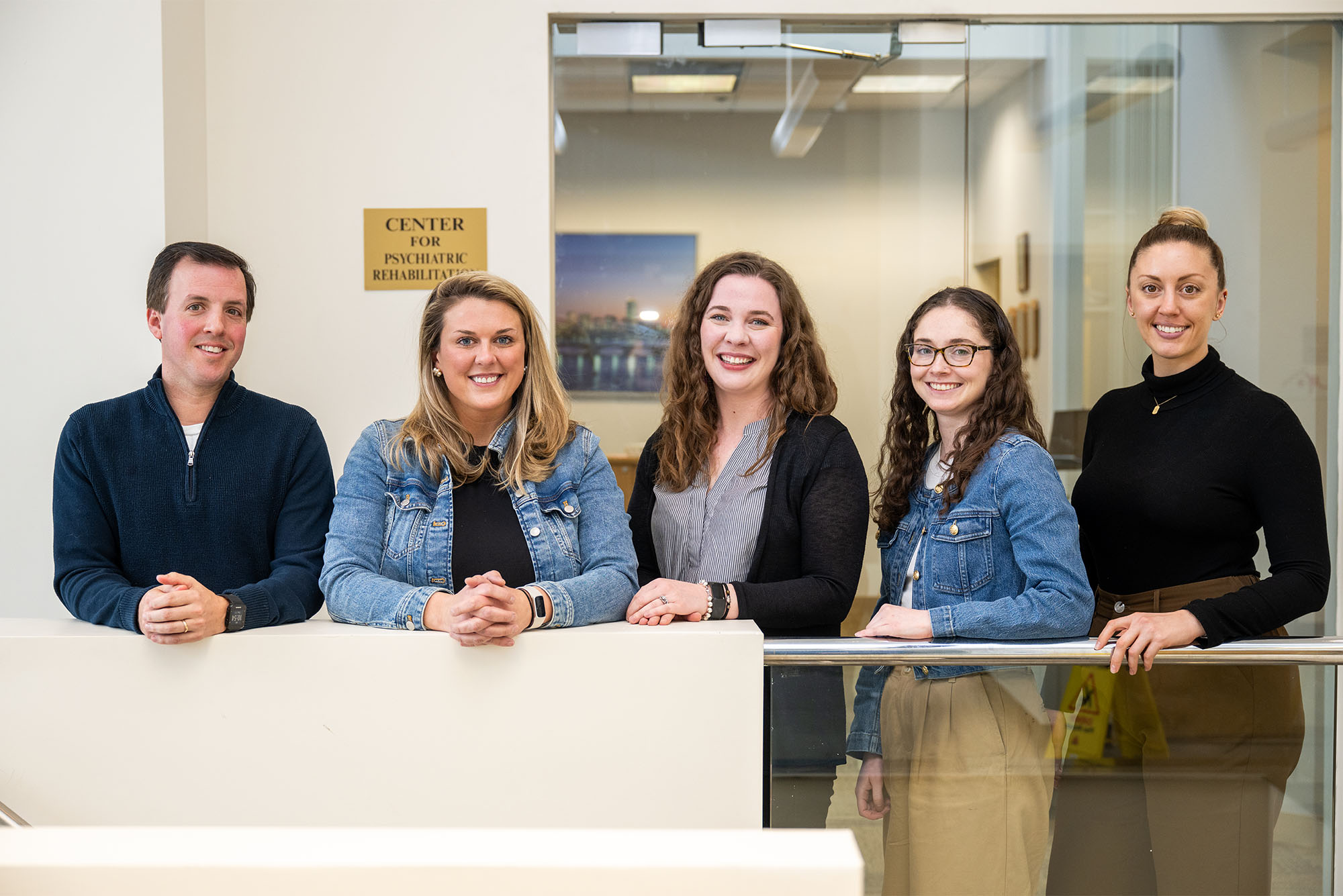
Staff members on the Center for Psychiatric Rehabilitation’s College Mental Health Education Programs team: Paul Cherchia (from left), Chelsea Cobb (CAMED’17), Ali Theis (SSW’18), Kayla Hoffstein, and Kelly Morrow.
Alene Bouranova
Cydney scott.
The reports are in, and they’re grim: young people in this country are struggling.
The United States recently dropped out of the top 20 on the world’s happiest countries list, a fall driven by Americans under 30 reporting feelings of loneliness and general dissatisfaction with the world. Last year, US Surgeon General Vivek Murthy declared loneliness an epidemic , pointing to its debilitating effects. Experts say loneliness can contribute to increased risks of strokes, dementia, heart disease, and premature death.
“For a variety of reasons, young adults come to college with less developed interpersonal skills,” says Dori Hutchinson (Sargent’85,’96), executive director of BU’s Center for Psychiatric Rehabilitation (CPR). “The pandemic, the use of technology to an extreme, their highly structured childhoods—I think we see the consequences of these influences in the growing amount of cyberbullying, rising rates of debilitating anxiety and depression, and the growing number of students who express loneliness.”
Enter the CPR , a mental health research, training, and clinical services center led by Sargent College of Health & Rehabilitation Sciences that’s dedicated to helping individuals of all ages with psychiatric disabilities. The center does not diagnose conditions, prescribe medications, or provide treatments. Rather, it offers comprehensive services and programs that give clientele the abilities and support needed to succeed on whatever path they’ve chosen for themselves.
A place to go when you feel alone
Sargent’s CPR has implemented a number of programs aimed at helping students at BU and beyond when things get hard.
College Mental Health Education Programs (CMHEP), one of the CPR’s core initiatives, offers a collection of services—such as classes, one-on-one counseling, and even group workouts—designed to help students living with mental health conditions or feeling adrift or alone.
The flagship offering is NITEO . Latin for “to shine” or “to thrive,” NITEO is an intensive, semester-long program for students who’ve had to take a leave of absence from any college or university for mental health or substance dependency reasons. The in-person program prepares them to resume their education through a host of resiliency- and academic skill–building activities.
One of the key components of NITEO is the Healthy Relationships curriculum.
Healthy Relationships is a set of 25 lesson plans that help students develop a sense of self and of belonging within their communities. (Healthy Relationships is also offered as a restorative justice course for respondents in Title IX cases.) Among a litany of objectives, the group lessons help students understand what constitutes a healthy relationship versus one that violates cultural or legal norms, learn about giving and receiving consent, assess what they value in romantic partners and friends, and build general communication abilities.
Healthy Relationships is also part of LEAD BU , a one-credit wellness and academic skill–building course available to all BU students. (Students can register on StudentLink.) The semester-long course covers classroom topics like test-taking strategies and presenting projects, while the wellness portion integrates the Healthy Relationships curriculum to teach students self-care and interpersonal skills.
Healthy Relationships, piloted in the summer of 2019, grew out of an online course on relationships for autistic adults codeveloped by Emily Rothman , a Sargent professor and chair of occupational therapy. The CPR’s version uses Rothman’s course as a springboard. The lessons constantly adapt in response to student feedback and staff observations. But at their core, they teach participants how to build and maintain relationships—which can combat loneliness, says Chelsea Cobb (CAMED’17), assistant director of CMHEP and one of NITEO’s facilitators.
That’s also where the curriculum’s recent tweaks come in. Part of the CMHEP’s job is to identify what issues students are struggling with and what skills they need to learn to overcome those issues. Following the COVID-19 lockdown and the feelings of loneliness it exacerbated, the CMHEP added lessons on topics such as effective interpersonal communication skills, how to develop new friendships and enhance ongoing ones, and the benefits and challenges of technology like social media and dating apps, Cobb explains.
Helping students learn how to make meaningful connections is integral to the center’s broader mission, Hutchinson says.
“Our primary value is personhood—that is, that everyone matters, that people who live with mental health conditions matter, and that their lives matter,” Hutchinson says. “My personal mission is to ensure that we can continue to conduct innovative research, training, and services that support people who come to us in flourishing.”
Flourishing, she adds, includes a sense of social connectedness. “A growing number of students indicate that they are not flourishing,” Hutchinson says. “I see our college mental health services as ways that we are contributing to combating the loneliness epidemic that students report.”
Creating space for community
Both Hutchinson and Cobb say that one of the greatest strengths of the Healthy Relationships curriculum is that it’s adaptable to any population or situation. For example, the CPR has worked with colleges as far away as the University of St Andrew’s in Scotland and the University of Alaska to offer the curriculum to their students.
Another strength: students in the same cohort often end the course as friends.
“In class, we’re always asking the group: What would you do? How would you respond to this situation?” says CMHEP senior training associate Ali Theis (SSW’18). “It takes time to build that community, but you get to the point where students are sharing their experiences and working through things together. That takes vulnerability. That added piece of cohesion is something I’ve really loved about the curriculum and the spaces it’s created.”
Explore Related Topics:
- Sargent College
- Share this story
- 0 Comments Add
Writer/Editor Twitter Profile
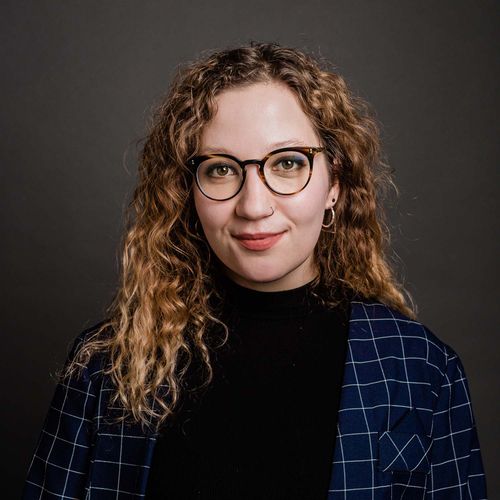
Alene Bouranova is a Pacific Northwest native and a BU alum (COM’16). After earning a BS in journalism, she spent four years at Boston magazine writing, copyediting, and managing production for all publications. These days, she covers campus happenings, current events, and more for BU Today . Fun fact: she’s still using her Terrier card from 2013. When she’s not writing about campus, she’s trying to lose her Terrier card so BU will give her a new one. She lives in Cambridge with her plants. Profile
Alene Bouranova can be reached at [email protected]
Photojournalist
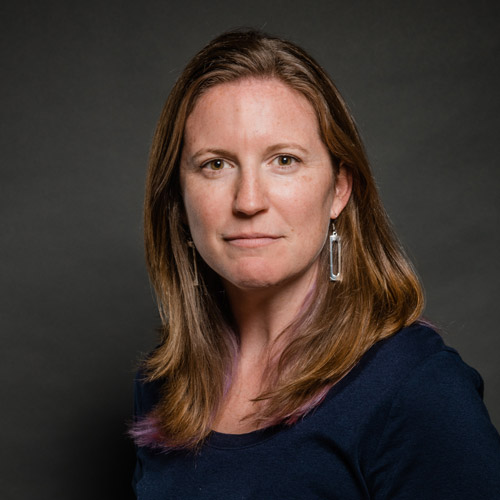
Cydney Scott has been a professional photographer since graduating from the Ohio University VisCom program in 1998. She spent 10 years shooting for newspapers, first in upstate New York, then Palm Beach County, Fla., before moving back to her home city of Boston and joining BU Photography. Profile
Comments & Discussion
Boston University moderates comments to facilitate an informed, substantive, civil conversation. Abusive, profane, self-promotional, misleading, incoherent or off-topic comments will be rejected. Moderators are staffed during regular business hours (EST) and can only accept comments written in English. Statistics or facts must include a citation or a link to the citation.
Post a comment. Cancel reply
Your email address will not be published. Required fields are marked *
Latest from BU Today
Bu hosts first-of-its-kind queer food conference, men’s tennis team on a quest for first patriot league title, this year’s tedxbu talks: childhood, privilege—and fungi, a video tour of stuvi i and stuvi ii, the weekender: april 25 to 28, sunday in the park with george opens at booth theatre, bu student-athletes honored at 2024 scarlet & white awards ceremony, a rundown of the best thrift and vintage spots near bu, pov: the biden-trump rematch may mark the end of an era, five common sexual health myths debunked, global programs photo contest showcases bu’s worldwide adventures and experiences, book recommendations in honor of world book day, anonymous $1m gift bolsters american & new england studies program, waste watchers, as we celebrate earth day, a reminder of what cannot be recycled at bu, bu honors best student employees and supervisor, women’s tennis heads to annapolis this weekend for 2024 patriot league tournament, reimagining cummington mall, pov: baseball needs to shake up the game—or risk a slow death.

IMAGES
VIDEO
COMMENTS
Before the visit please read " the rules for visiting ". • The grounds and buildings of the Auschwitz I and Auschwitz II-Birkenau camps are open to visitors. The duration of a visit is determined solely by the individual interests and needs of the visitors. As a minimum, however, at least three-and-a-half hours should be reserved.
On busy days, over 30,000 tourists will walk through the grounds of Auschwitz. Dozens and dozens of tours run simultaneously through the old camp and Birkenau, a few minutes down the road. As such, they run a pretty efficient ship. When you arrive you sign up for a tour time and are equipped with a pass, headset and radio.
Auschwitz left its mark as one of the most infamous camps of the Holocaust. Key Facts. 1. Located in German-occupied Poland, Auschwitz consisted of three camps including a killing center. The camps were opened over the course of nearly two years, 1940-1942. Auschwitz closed in January 1945 with its liberation by the Soviet army.
Entry cards are available at visit.auschwitz.org at "online individual visit" section. The online tour lasts about two hours and is divided into two parts - in Auschwitz I and Birkenau. The guide's narration is conducted live. Additionally, the educator will also use multimedia materials, archival photographs, artistic works, documents, and ...
In order to enter the Auschwitz Memorial all visitors, also those coming in organized groups, must have their personalized entry pass and ID with them. All guided tours start at former camp Auschwitz I. Visits to the Museum by children under the age of 14 are not recommended. Entry Passes for individual visitors are not subject of change or ...
Auschwitz: Genesis of Death Camps . After the start of World War II, Adolf Hitler (1889-1945), the chancellor of Germany from 1933 to 1945, implemented a policy that came to be known as the ...
How to visit Auschwitz. You can visit Auschwitz two ways: with a tour from where you are staying in Poland (most likely Krakow, Katowice, Warsaw, or Wroclaw) or independently, reaching the site by car or using public transport. Both options are doable; however, the tour is a slightly better one as everything will be taken care of for you.
Visit Planner. Our visit planner will help you make the most of your time at the Museum and includes a free gift from the Museum Shop. Learn More. This Section. Plan Your Visit. Plan Your Visit. Resources and tips to assist you before, during, and after your visit to the Museum.
Auschwitz, Nazi Germany's largest concentration camp and extermination camp. Located near the town of Oswiecim in southern Poland, Auschwitz was actually three camps in one: a prison camp, an extermination camp, and a slave-labor camp. Between 1.1 and 1.5 million people died there; 90 percent of them were Jews.
More than a million people from all over the world visit the Museum annually since 2007. The highest number of visitors was registered in 2014, when more than 1.5 million people visited Auschwitz. In 2014 most visitors came from: Poland (398 thousand), Great Britain (199), USA (92), Italy (84), Germany (75), Israel (62), Spain (55), France (54 ...
An individual visitor will be able to enter the Auschwitz Memorial in the first available time slot in between the hours for individual visitors without an educator. Visitors who made a group reservation with an educator will have to reserve another entry time. These groups must start the visit at the specified time.
Krakow, Auschwitz, Enamel Factory & Wieliczka Salt Mine - 4 Days. Browse the best tours in Auschwitz with 1,109 reviews visiting places like Krakow and Auschwitz. All Major Brands.
Journey back in time to WWII to learn the horrors and tragedies of the Holocaust. See the original roads, fences, watch towers and gas chambers of Auschwitz. Visit the Auschwitz Museum I and Auschwitz Museum II-Birkenau with a guide. Travel to Krawkow from Warsaw in comfort on the fast train in only 2.5 hours.
The first part of the museum visit takes approximately 1 hour 20 minutes to 1 hours 50 minutes. Between the first and second part there will be a 10-15 minute break, when you can eat your lunch. After the break, you will board a bus for the second part, a visit of Auschwitz II Birkenau, where you will spend around an hour with the same guide.
Visit Auschwitz on a day trip from Krakow. Learn about the history of the Auschwitz-Birkenau concentration camps during a guided tour with a certified historian and guide. Auschwitz-Birkenau was founded in 1940 by Nazi Germany and was the largest concentration camp operated by the Nazis. It became the final resting place for millions of people ...
Visit former Nazi concentration camps Auschwitz I and Auschwitz II (Birkenau) where more than milion people were killed during the Second World War. Dear traveler, from March 2020 there is a new law in Auschwitz-Birkenau and booking with a lot of time in advance is the only way to be sure about going on this tour.
2. From Krakow: Auschwitz-Birkenau Guided Tour & Pickup Options. Visit Auschwitz on a day trip from Krakow. Learn about the history of the Auschwitz-Birkenau concentration camps during a guided tour with a certified historian and guide. Auschwitz-Birkenau was founded in 1940 by Nazi Germany and was the largest concentration camp operated by the ...
"The Tattooist of Auschwitz" joins a crop of World War II-period TV series inspired by buzzy bestselling novels. Hulu recently launched "We Were the Lucky Ones," based on Georgia Hunter ...
It's been nearly 80 years since the end of the Holocaust, but the harrowing experiences of survivors are still coming to light. One of those stories is the focus of a new Peacock series, "The ...
EGOT-winner Barbra Streisand was moved to make new music for an upcoming television series that both examines history and sheds light on an issue that persists in the present day.
Melanie Lynskey is praising husband Jason Ritter for putting his own acting career on hold for her success. "He's the most supportive person in the world," the Yellowjackets star told People ...
Barbra Streisand's New Single 'Love Will Survive' for 'Tattooist of Auschwitz' Is Here: Stream It Now "Even in the darkest of times, the power of love can triumph and endure," the ...
The limited series "The Tattooist of Auschwitz" (Peacock, May 2), inspired by the real-life story of two Jewish Holocaust survivors, ... For more information, visit our FAQ's.
'The Tattooist of Auschwitz' actress Melanie Lynskey tells PEOPLE she and her husband since 2020, Jason Ritter, pick roles based on what will 'help move the person's career forward.'
The reports are in, and they're grim: young people in this country are struggling. The United States recently dropped out of the top 20 on the world's happiest countries list, a fall driven by Americans under 30 reporting feelings of loneliness and general dissatisfaction with the world. Last year, US Surgeon General Vivek Murthy declared loneliness an epidemic, pointing to its ...